 |
by Andre Revilla on (#6XWRV)
Sonos has announced a major software update for its flagship Sonos Ace headphones that brings some new features to the premium wireless cans. Chief among them is the long-awaited TrueCinema feature, which was first promised as upcoming when the headphones launched in 2024. TrueCinema uses a compatible Sonos soundbar to measure the acoustic dynamics of the room you're sitting in. It then uses that data to increase the accuracy of the spatial sound in your headphones, in the same fashion as Trueplay on Sonos speakers. The idea is for the audio the user hears to mimic that of a well-balanced surround sound system thats sits right in the room you're listening in.TV Audio Swap is also getting an update and will now support two sets of Sonos Ace headphones synced to the same compatible soundbar, where it previously supported just one set. This feature allows users to seamlessly transfer the audio from their soundbar to their headphones.The update also improves the headphones Active Noise Cancellation by leveraging on-board sensors to adapt to a user's hair, glasses or hats in real time. Using the sensors, the Sonos Ace will then compensate for sound leaks.Some improvements to call quality are also coming to Sonos Ace with the addition of SideTone, a feature that plays a user's voice back to them at low volume while on a call. The audio fidelity on phone calls has also received a bump through this update, though details on what bitrate or exactly how it was improved are not available.Jason White, head of software at Sonos, said the company's goal has been to share meaningful software updates that deliver new enhancements to existing products. Our goal has always been to create products that earn their place in people's lives for years, and this Sonos Ace update is a great example of that. It proves that your best tech investment doesn't need to be your newest, it just has to be built right," White said.This update launches globally today and is available through the Sonos app.This article originally appeared on Engadget at https://www.engadget.com/audio/headphones/sonos-ace-headphones-get-long-awaited-truecinema-sound-and-more-in-big-update-163012056.html?src=rss
|
 Engadget is a web magazine with obsessive daily coverage of everything new in gadgets and consumer electronics
Engadget is a web magazine with obsessive daily coverage of everything new in gadgets and consumer electronics
| Link | https://www.engadget.com/ |
| Feed | https://www.engadget.com/rss.xml |
| Copyright | copyright Yahoo 2026 |
| Updated | 2026-01-02 13:31 |
 |
by Steve Dent on (#6XWRW)
Qualcomm's has launched its latest processor for smart glasses, and though it's a modest upgrade over the previous chip, it has a new trick. The Snapdragon AR1+ Gen 1 can run AI directly on devices with no need for a smartphone or cloud connection, allowing users to go out or do chores with only their smart glasses, the company claims. The chip could appear in next-gen AR glasses from the likes of Meta and XReal.Smart glasses often require large temple arms to accommodate chips and other components, but the AR1+ Gen 1 is 28 percent smaller than the the AR1 Gen 1, so it allows for a 20 percent temple height reduction. At the same time, it requires less power across key use cases including computer vision, wake with voice, Bluetooth playback and video streaming. Qualcomm also promises "premium" image quality via technologies like binocular display support, image stabilization and a massive multi-frame engine.QualcommThe key feature, though, is the on-glass AI powered by Qualcomm's 3rd-gen Hexagon NPU, with 1 billion small language model (SLM) parameters on-glass. That allows it to run AI assistants that use SLMs like Llama 1B, with users speaking commands and seeing the results displayed on the glasses as text."While on stage, I was at the 'supermarket' and asked my glasses for help with fettuccine alfredo I needed to make for my daughter's birthday party," wrote Qualcomm SVP of XR Ziad Asghar. "This demonstration was a world's first: an Autoregressive Generative AI model running completely on a pair of smart glasses."Qualcomm shouted out Meta's Ray-Ban glasses as well as its chunky Orion AR glasses prototype as examples of where smart glass technology is heading. It then added that tech like its Snapdragon AR1+ Gen 1 chip will enable "sleeker form factors that don't compromise on the ability to run AI models." Reading between the lines, you can expect the chip to appear in ever-slimmer standalone AI-powered smart glasses in the near future.This article originally appeared on Engadget at https://www.engadget.com/wearables/qualcomm-says-its-new-ar1-gen-1-chip-can-handle-ai-directly-on-smart-glasses-163002410.html?src=rss
|
 |
by Lawrence Bonk on (#6XWRX)
OpenAI has inked a deal with Google to begin using the latter's cloud service to meet its growing needs for increased computing capacity, according to a report by Reuters. This is something of a surprise, given that Google and OpenAI are rivals in the AI space.The terms of the deal remain unknown, but reporting indicates it has been in the negotiation phase for the past several months. This marks OpenAI's latest move to diversify its compute sources away from Microsoft Azure.Microsoft had been OpenAI's exclusive data center provider until January, after OpenAI CEO Sam Altman blamed the lack of compute capacity for the delay of several products. The company made a deal in March with CoreWeave to provide increased cloud compute capacity. That deal was worth nearly $12 billion.Microsoft Azure may no longer be the exclusive cloud provider for OpenAI, but it's not as if the two companies have parted ways. OpenAI still relies heavily on Azure and the corporations are currently in negotiations to revise the terms of their partnership, which will likely revise the equity stake Microsoft holds in OpenAI.However, this is certainly a win for Google Cloud. ChatGPT poses the biggest threat to Google's search business in years, and this deal could indicate a softening between the two companies. In any event, it'll certainly bring a whole lot of money into Google Cloud's coffers. The platform made $43 billion last year and accounted for 12 percent of parent company Alphabet's overall revenue. The addition of OpenAI to its customer portfolio will likely extend those numbers dramatically.
|
 |
by Lawrence Bonk on (#6XWRY)
There's a new (ish) retro console on the block. The ModRetro Chromatic had a soft launch last year but is now "permanently in stock" for consumers. This is another machine that runs Game Boy and Game Boy Color cartridges, like the beloved Analogue Pocket and others.The Chromatic features a magnesium alloy build, so it should take a licking. It also features a backlit screen - something the original Game Boy lacked. As a matter of fact, Nintendo didn't fully embrace backlighting technology until midway through the life of the Game Boy Advance.
|
 |
by Karissa Bell on (#6XWRZ)
Nearly two years after launching Threads, Meta is finally giving in to users on one of the most requested features for the service: direct messaging. The company is beginning to test a dedicated inbox for Threads, beginning with Hong Kong, Argentina and Thailand, Mark Zuckerberg revealed in a post on Threads.Threads has had some messaging capabilities since last year, but the feature only allows users to send Threads posts to friends via their Instagram DMs. This is more than a little clunky as it requires switching back and forth between apps. It's also been the source of some confusion - at least among my friends - because it allows you to send Threads posts to contacts on Instagram even when they don't have a corresponding Threads account. For me, this means I sometimes send a post to a friend on Instagram only for them to tell me they can't view it properly because they don't use the app.Needless to say, all this has been far from ideal. And, unsurprisingly, DMs have been a highly requested feature from Threads users. But Meta executives - and Instagram head Adam Mosseri in particular - have been inexplicably skeptical of the feature. Mosseri said last year that he wanted to "make the Instagram inbox work" for Threads rather than build out a separate messaging feature for the app.That's finally changing, though. Meta is beginning its initial tests of a Threads-specific inbox this week. The feature will only support 1:1 chats - at least for now - so it will still be much more limited than what's available on Instagram or even X. It will also only be available in a couple of countries to start, though Meta says it plans to expand to more regions "soon."This article originally appeared on Engadget at https://www.engadget.com/social-media/threads-is-finally-getting-its-own-dm-inbox-160001216.html?src=rss
|
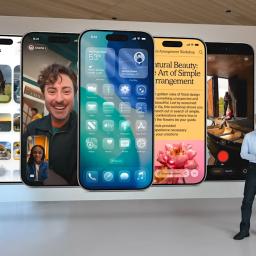 |
by Devindra Hardawar on (#6XW7M)
In this special episode, recorded live in Cupertino, Cherlynn and Deputy Editor Nathan Ingraham are joined by the Washington Post's Chris Velazco and Wired's Julian Chokkattu to discuss Apple's announcements at WWDC 2025. Though the announcements were all over the place and felt difficult to judge until they roll out to devices, our guests and hosts agree that they felt more meaningful than past WWDCs.Subscribe!
|
 |
by Andre Revilla on (#6XWNC)
Nintendo just dropped a trailer for a Splatoon spinoff game. Titled Splatoon Raiders, the third-person paint slinging shooter spinoff will be released exclusively on the Switch 2. This marks the first spinoff in the franchise and will take players to a new location called the Spirhalite Islands.While details are sparse at this early stage, the trailer mentions players will take on the role of a mechanic" alongside Deep Cut, a fictional band in the Splatoon universe. There's no mention of multiplayer (and no footage of it in this teaser), so Splatoon Raiders may well be a single-player experience. While the initial launch will be exclusive to Nintendo's newest handheld, the trailer says that research is still underway," implying there may be future releases on additional consoles.A substantial update for Splatoon 3 was also announced, with version 10.0 landing on both Switch and Switch 2 June 12. Included in the update is the Splatlands Collection, a cache of 30 new weapons from the Barazushi and Emberz in-game brands. While they are based on previous weapons, they will sport new designs, sub weapons and specials.The update also includes matchmaking improvements, with an added metric called Series Weapon Power, which will track your effectiveness per weapon based on your win-loss ratio in battles. This new metric will be considered when pairing you with other online players. Version 10.0 is also bringing back Urchin Underpass, a popular multiplayer map from the original Splatoon game. Nintendo says that Switch 2 players will notice more detailed visuals and improved performance with this update.Alongside the Animal Crossing franchise, Splatoon and its sequels have been star properties for Nintendo, and have sold over 30 million copies worldwide. The Nintendo Switch 2 was released on June 5 and has been hard to find in stock during its first launch week.This article originally appeared on Engadget at https://www.engadget.com/gaming/nintendo/splatoon-spinoff-game-will-launch-exclusively-on-switch-2-151541869.html?src=rss
|
 |
by Kris Holt on (#6XWND)
Looking for a budget-friendly iPad you can use for everyday tasks, like catching up on emails and messages, then reading the latest news before streaming a show? This might be the deal for you. The A16-powered iPad (a model that Apple released just a few months ago) has dipped to $299. That's $50 off the list price. The tablet briefly dropped to $278 at one point. However, this is the best price we've seen for this iPad otherwise. This 11-inch iPad has 128GB of storage and has Wi-Fi 6 connectivity (no LTE capabilities here). The discount applies to all four colorways: blue, pink, silver and yellow. This is our current pick for the best budget iPad. We gave it a score of 84 in our review. We feel that Apple could stand to upgrade the entry-level iPad's display, which does not have an anti-reflective coating and has a 60Hz refresh rate (which is the bare minimum for a new device these days). The screen isn't laminated, either - there's a gap between the actual panel and the glass that encases it. While this is good for repairability, we feel that it makes the screen look cheaper. Actions like writing notes with an Apple Pencil feel less natural than on the likes of the iPad Air too. Speaking of the Apple Pencil, the A16 iPad isn't compatible with the second-gen model or the Pencil Pro. As such, the only pressure-sensitive Apple Pencil that works with this iPad is the original model from 2015, which doesn't attach to the tablet magnetically. The USB-C Pencil can stick to the tablet, but it does not offer wireless charging or pressure sensitivity. Still, perhaps you don't care about doodling or taking handwritten notes on an iPad. If that, the screen issues and the lack of Apple Intelligence generative AI features (this model doesn't support them) don't matter to you, this iPad might be all you need. The chip is fast enough to handle everyday tasks, while the storage and RAM increases compared to the previous model are very welcome - especially considering that Apple didn't bump up the price. The build quality and battery life are still solid overall too. Check out our coverage of the best Apple deals for more discounts, and follow @EngadgetDeals on X for the latest tech deals and buying advice.This article originally appeared on Engadget at https://www.engadget.com/deals/apples-latest-entry-level-ipad-is-back-on-sale-for-299-145940023.html?src=rss
|
 |
by Mariella Moon on (#6XWJC)
Meta chief Mark Zuckerberg has been recruiting experts to join a team he's assembling to achieve AI superintelligence, according to Bloomberg and The New York Times. Zuckerberg has reportedly been discussing potential recruits with other senior leaders from the company in a WhatsApp group chat dubbed "Recruiting Party." He reportedly has a personal list of recruits, which include AI researchers, infrastructure engineers and other entrepreneurs. Zuckerberg has invited them to lunch and dinner at his homes in California to get them to join his team over the past month.At the moment, the immediate goal of AI companies is to achieve true artificial general intelligence (AGI), wherein a machine has human-level intelligence and can achieve any task a human can do. Superintelligence is a step beyond that. An AI system with superintelligence is supposed to have intellectual powers far beyond any human's.The Times says Zuckerberg has already tapped Alexandr Wang, the founder of AI startup Scale AI, to join the new team. Meta is planning to invest billions of dollars into Wang's company, which provides other AI companies with data to train their models. The deal will also bring Scale's other employees onboard Meta, though it's unclear if any of them are joining the new team, as well.Meta has also offered dozens of AI experts from other companies, including Google and Open AI, compensation packages worth seven to nine figures to join the team. Some, according to The Times, have already agreed. In his pitch to potential recruits, Zuckerberg apparently said that his company's advertising business can finance its own AI development even if it costs tens of billions of dollars, unlike rivals who have to raise funds first.Zuckerberg, Bloomberg said, decided to oversee recruitment himself due to frustration over the quality of and the public's response to Meta's Llama 4 large language model. Llama 4 wasn't well-received, and critics argued that Meta overpromised but underdelivered. The company also had to delay the release of its "Behemoth" Llama 4 model, which the company vowed will outperform "GPT-4.5, Claude Sonnet 3.7, and Gemini 2.0 Pro on several STEM benchmarks."This article originally appeared on Engadget at https://www.engadget.com/ai/meta-is-reportedly-forming-an-ai-superintelligence-team-133030015.html?src=rss
|
 |
by Sarah Fielding on (#6XWJD)
Robotaxis are coming to the UK next year thanks to a partnership between Uber and Wayve, a British company focused on AI for autonomous vehicles. A pilot program is set to take place in Spring 2026 and follows last year's passage of the Automated Vehicles Act, which set the stage for self-driving cars to be deployed across the country."This is a defining moment for UK autonomy," said Alex Kendall, CEO and co-founder of Wayve, in a statement. "Our Embodied AI learns to drive anywhere, in any vehicle, and this trial brings us closer to bringing safe and intelligent driving to everyday rides across the UK and beyond."According to Heidi Alexander, the UK's secretary of state for transport, the agreement will add 42 billion ($56.7 billion) for the economy and create 38,000 jobs. Alexander doesn't state how exactly the latter will occur as a result of driverless taxis.This article originally appeared on Engadget at https://www.engadget.com/transportation/the-uk-will-get-its-first-robotaxis-next-year-131731015.html?src=rss
|
 |
by Jackson Chen on (#6XWJE)
It's been two years since Roku first introduced its in-house TVs to the market and the streaming-device-turned-TV-maker isn't slowing down. For 2025, Roku refreshed its entire TV lineup and added more features to its midrange Roku Plus models that were previously reserved for its higher-end TVs.The latest Roku Plus Series TV gets Smart Picture Max, a feature that automatically adjusts your TV's picture settings on a scene-by-scene basis and was exclusive to the company's Pro Series TVs. To make the Plus Series an even better deal, Roku added mini-LED backlighting for better picture quality, a remote finder button on the back of the TV and an integrated cable management system, which are all features also pulled from Roku's Pro models. To round out the Plus Series, Roku added a built-in subwoofer and a new processor for faster navigation throughout the interface.To ensure the Pro Series TVs still feel pro, Roku upgraded them with the next generation of its Smart Picture Max. The latest software improves motion clarity, corrects compression artifacts, and automatically selects the best picture mode based on what you're watching. Roku is also claiming a 75 percent increase in dynamic contrast thanks to its re-engineered mini-LED backlighting for its most expensive models. Roku is introducing hands-free voice controls without a remote with the Pro Series TVs, but they also come with the updated and rechargeable Roku Voice Remote Pro that has backlit buttons and customizable shortcuts. The most affordable models, Roku's Select Series, are mostly getting software upgrades that are available across the lineup, but now have size options going up to 85 inches. However, all of Roku's refreshed TVs can support its Bluetooth Headphone Mode and Dolby Audio.Roku's expanded Select Series offerings are available in sizes ranging between 24 and 85 inches, starting at $130, while the Plus and Pro Series still only have the 55-, 65- and 75-inch options. The upgraded Roku TVs are out now at retail partners including Best Buy, Walmart, Target and Amazon.This article originally appeared on Engadget at https://www.engadget.com/home/roku-adds-more-premium-features-to-its-own-line-of-midrange-tvs-130013368.html?src=rss
|
 |
by Mariella Moon on (#6XWJF)
Apple is bundling its News+ subscriptions with a new game that users will be able to access when they get iOS 26. MacRumors has reported that Apple is calling it the "Emoji Game," because, well, it's all about using emoji to fill blanked-out letters in incomplete words and phrases. For the word "Disappear," for instance, you can use the "pear" emoji to complete it if the puzzle only shows its first five letters. For the phrase "rubbing elbows," you can use the "pink bows" emoji if the blank spaces correspond to "bows." The same emoji could have several meanings, as well: "Pear" can also be used to correspond to "fruit" in the word "fruitful," as an example.It's a neat little game that people can play to pass the time, but it can only be accessed by those paying $13 a month for Apple News+. The subscription will give you access to magazines and newspapers, audio stories and regional publications, along with daily puzzles like the Emoji Game. It's pretty pricey, though like Apple's other services, users can share their subscription with up to six family members.At the moment, only developers who already have iOS 26 beta will be able to play the Emoji Game. Apple's new mobile OS, which the company announced at WWDC, will be released to the public this fall. It will be compatible with all iPhones announced in 2019 or later, which means iPhone XR, iPhone XS and iPhone XS Max owners won't be able to install it anymore. In addition to adopting a new naming convention that's based on the year it's released, the upcoming version of iOS has undergone a major visual overhaul, with translucent user interfaces inspired by the look of visionOS.This article originally appeared on Engadget at https://www.engadget.com/mobile/smartphones/apple-news-subscribers-are-getting-an-emoji-game-with-ios-26-123056186.html?src=rss
|
 |
by Nathan Ingraham on (#6XWFS)
WWDC 2025 felt like a course-correction. Last year's tech event season left me cold - all the AI-powered tools supposedly for consumers that Microsoft, Google and finally Apple were peddling felt like a lot of hype without much real benefit. And that was before Apple fumbled the development of its more advanced Siri, showing off pre-recorded demos that weren't close to ready. Google I/O last month was more of the same, with seemingly infinite versions of Gemini and not a lot of things I felt like I would use day-to-day. And if you go back to 2023, the highlight of WWDC was the Vision Pro - most definitely not a product for most people.But yesterday, Apple offered up a number of features that'll actually likely be noticed and used by more people, whether we're talking about the redesigned iPad multitasking system or a ton of new customization options for the iPhone. And when Apple Intelligence was mentioned, it felt less like fixes to problems no one has and more like smart tools that could actually make your life easier.Live Translation is probably the best example of that. Apple Intelligence will be able to do things like automatically translate your messages, show live-translated captions in FaceTime calls and provide spoken translations on telephone calls. For anyone dealing with multi-lingual conversations, this could be extremely useful, something you couldn't always say about many of the Apple Intelligence features from 2024.Visual Intelligence is another Apple Intelligence standout. It's quite similar to Google Lens, in that you pointed your phone's camera at something and it would recognize what it was looking at and give you information about what was on your screen. This year, Apple's building that right into the screenshot tool and using the information it recognizes in a variety of intriguing ways. (It's worth mentioning that Google has offered features like these for a while now, though.) For example, you could screenshot an image of an event poster and Visual Intelligence can create a calendar event with its details. You can also take a screenshot of something and then ask ChatGPT about it. The example Apple gave was a screenshot of a picture of a mandolin; the user then asked ChatGPT to give some examples of rock songs that use the instrument.And even the more frivolous Apple Intelligence features at least sounded more fun this year. The first real use of Apple Intelligence on the Apple Watch is Workout Buddy, a coach that can inspire you throughout a workout. Instead of just letting you know you're halfway through a run, the Workout Buddy can see your whole workout history and offer more detailed insights - like giving you kudos on finishing your fastest 10K, for example. That said, none of this runs on the Apple Watch itself. You'll need an iPhone with Apple Intelligence nearby" to use it.Beyond Apple Intelligence are a variety of features that I hope will meaningfully improve using Apple's hardware. The new Liquid Glass design across all of the company's products looks nice, but I'm more excited about the work that Apple is doing to minimize spam on the iPhone. Being able to screen for messages from unknown contacts should go a long way towards making the Messages app better - text spam is out of control (I got two spam messages while Apple was talking about spam messages), and anything to crack down on that now before it becomes as bad as phone spam is crucial. Apple is also adding some call screening features similar to something Android has had for more than five years now.For me, though, the iPad updates Apple announced yesterday are probably the most exciting things I've seen. I've long been interested in trying to use one as my main device and I've gotten to the point where I can do almost anything I need or want to do on Apple's tablet. But I also can't deny that the software has almost always felt a step behind the power and cutting-edge technology the company puts in the iPad Pro lineup.Apple answered that with what it called its biggest update to iPad multitasking ever, something that actually doesn't feel like hyperbole. Apps still open in full screen, but you can resize them and layer them in whatever fashion you like. Stage Manager attempted this, but the new layout seems even more flexible than that. And, perhaps more importantly, it should remember sizing and arrangement better than before. There's also a menu bar for easier access to power features, and the Files app lets you drop any folder you want in your dock for quick access. I'm not naive enough to think this will satisfy everyone who finds iPadOS to be lacking in some way, but it does feel like Apple has listened to a lot of the complaints power users have had with the iPad over the years.Despite the theme of unification - in the platform names, with the new UI design and shared features, the event did feel a little like a rapid-fire feature drop that wasn't always fully connected. Given that Apple broadly covered six platforms as well as Apple Intelligence in 90 minutes, it's not surprising that things felt quick and also a bit scattered. But amidst the slightly chaotic bursts of news, there were plenty of things that caught my attention, and I'm sure there will be more as I dig further into what Apple is planning (there are always features that aren't touched on in the keynote, after all). It feels like a bit of a throwback, and it made me enjoy this WWDC a good bit more than the last.This article originally appeared on Engadget at https://www.engadget.com/big-tech/wwdc-2025-was-a-return-to-smaller-scale-features-that-are-actually-useful-120027296.html?src=rss
|
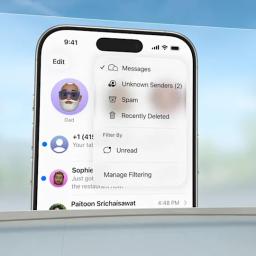 |
by Daniel Cooper on (#6XWFT)
Apple's Worldwide Developer Conference (WWDC 2025) kicked off yesterday, with the usual glossy keynote from the iPhone maker. As ever, the company outlined the changes it's made to its operating systems, all now named by year rather than version number. The biggest news is a visual overhaul of all the OSes, dubbed Liquid Glass, to bring them more in line with each other, and sharing features across the platforms. For instance, it's redesigned the iPhone's phone app, but it'll also be available on macOS Tahoe as well. Plus, some updates to Apple Intelligence, which include the useful (live translation of text and speech) and the less useful (using Image Playground to make backgrounds for your group chats).The focus here, on smaller tweaks and features with more practical utility, is welcome after last year's show. After all, the company made some bold claims about what it was bringing to Siri, which it simply couldn't deliver in the time allowed. Apple does its best work when it's giving its users features that make their lives easier, not when it's trying to shout down its Silicon Valley rivals in AI.- Dan CooperGet Engadget's newsletter delivered direct to your inbox. Subscribe right here!The news you might have missed
|
 |
by Sam Chapman on (#6XW52)
Apple announced a lot of new features in today's WWDC stream, but news from one follow-up meeting heralds the end of an era. MacOS 26, also known as macOS Tahoe, will be the last version of the operating system to work on Macs powered by Intel Processors. Tahoe-supporting Intel Macs will get full access to all the new features, and they'll still get security updates for the next three years. By 2028, though they'll be out of the Apple ecosystem.The first Apple Silicon processor launched in 2020. Since then, Apple has run all its hardware on its own Apple Silicon microchips, which are significantly more powerful than the Intel chips it had been using for most of the millennium. Apple Silicon's ARM-based architecture can perform more operations and use less battery power than the x86-based Intel processors. Many Intel-powered Macs have already aged out of updates, but today's update puts an expiration date on the last survivors.The announcement, which came during a Platform State of the Union (SOTU) following the main WWDC event, was aimed primarily at app developers. Apple is encouraging developers to plan for the post-Intel era and ensure the migration is as smooth as possible for themselves and their users. Both macOS 26 and the planned next version, macOS 27, will include the Rosetta translation process, which helps apps built for x86 run on ARM. After 27, Rosetta will remain in place to support legacy video games.Intel-powered Macs that will support Tahoe include the 2019 16-inch MacBook Pro, the 2020 13-inch MacBook Pro, the 2020 27-inch iMac and the 2019 Mac Pro.This article originally appeared on Engadget at https://www.engadget.com/computing/macos-tahoe-is-the-end-of-the-line-for-intel-macs-113036626.html?src=rss
|
 |
by Anna Washenko on (#6XW53)
Hideo Kojima doesn't really go for half measures. Following a 10-minute trailer that unveiled some early details, the game creator participated in a beefy 80-minute panel discussion with Geoff Keighley about Death Stranding 2: On the Beach on the final day of Summer Games Fest 2025.The wide-ranging conversation included some clips from the sequel to the acclaimed Death Stranding, including its first five minutes, which sparked lots of cheers as people recognized performers' names in the opening credits. Kojima also showed the English language version of a scene that was revealed during the Tokyo Game Show, highlighting the performances of Elle Fanning as Tomorrow and Shioli Kutsuna as Rainy. Fans also got a chance to see Tomorrow in action as she literally gets down and dirty in the tar to take out some robotic combatants. There was also a live gameplay demo, first showing Sam in combat with a blood boomerang and a tar cannon, then a more challenging fight against Neil that showed off some stealth attacks as well as some more weaponry.Death Stranding 2: On the Beach will be available on PlayStation 5 starting June 26.This article originally appeared on Engadget at https://www.engadget.com/gaming/watch-22-minutes-of-death-stranding-2-gameplay-from-summer-games-fest-224814307.html?src=rss
|
 |
by Will Shanklin on (#6XW2X)
iPadOS 26 makes Apple's tablet much more like macOS. Better windowing? Check. The menu bar? Yup. There's even a more fine-tuned Files app, along with document editing in Preview. It's as if Apple took a checklist of longtime power-user requests and fulfilled them all. It's enough that the App Store's walled garden could be the last remaining reason to stick with your Mac.For me, the iPad's productivity changes were the most intriguing part of Apple's WWDC 2025 keynote. Years ago, when Apple first made iPadOS more work-friendly, I tried to replace my MacBook with the iPad Pro. After reviewing several Microsoft Surfaces, I wanted an Apple equivalent, dammit. So, despite the iPad's obvious limits, I gave it a shot.For most things I did, it was... fine. But there were always tasks that slowed me down. Apple's Split View, which places two apps side by side, was solid. Stage Manager added even more windowing nuance. But it still wasn't the same as arranging windows manually. All I had to do was hop back on a Mac, and things became clear: The iPad was nowhere near ready for my workflow. I was trying to fit a square peg into a round hole.The changes in iPadOS 26 will finally bring the tablet close to something that could replace a Mac. For many, I suspect it will be more than enough. You can place windows anywhere and resize them fluidly. The menu bar will make it easier to access the finer controls of apps. You can tile windows and see them all in a grid with Expose. The Files app catches up with the Mac's Finder. The new Preview app should make document editing a breeze. And you can easily return to full-screen iPad simplicity at any time.AppleThat raises the question: Where does iPadOS still fall short of macOS? It's the lock-in, stupid.The Mac grew up in an era when you could install apps from anywhere. First, it was discs. Then, the internet. Sure, Apple made changes in the last decade that make macOS a bit more restricted. System Integrity Protection (SIP) comes to mind. Gatekeeper, too. However, on the whole, it remains a relatively open environment. Getting your apps from anywhere often means a broader selection, faster updates and fewer restrictions.The iPad, on the other hand, evolved from the iPhone. (Those old enough may recall the "It's just a big iPod touch" commentary mocking the first model.) The App Store has always been the only official way to install apps on the iPad (EU exceptions notwithstanding). That remains so in iPadOS 26.The tablet software also prevents apps from overriding security and privacy restrictions. While that may not sound like a good idea, it can be a killer feature for trusted Mac apps.Keyboard Maestro on MacOSStairways SoftwareFor example, Keyboard Maestro on macOS can automate almost anything you can do with a keyboard and mouse. BetterTouchTool also offers a (nearly) endless list of customizations, including window controls. (My favorite is changing the yellow "traffic light" button so that it hides apps instead of minimizing them.) Karabiner-Elements lets you remap any key. A clipboard manager can, with a single keystroke, display everything you've copied.Then there are Mac apps that let you use alternatives to Apple's versions. Third-party launchers like Raycast and Alfred are like Spotlight on steroids. (Their extension libraries are so vast, they have their own storefronts.) Apps like Rectangle and Moom give you alternatives to Apple's window management. Many Mac apps offer more flexible text replacement than Apple's built-in solution.AppleWhat iPadOS 26 does is draw a line between two types of power users. Like before, Mac power users will use some combination of the above examples. Meanwhile, a new class of iPad power users will enjoy the tablet's desktop capabilities. But the latter will still be limited to Apple's version of, well, everything. The power is much stronger now; openness, however, isn't.For that reason alone, I'll likely remain a Mac-first guy for the foreseeable future. But iPadOS 26 will surely tempt me to experiment.This article originally appeared on Engadget at https://www.engadget.com/mobile/tablets/apples-walled-garden-is-the-ipads-biggest-roadblock-to-becoming-a-mac-223014619.html?src=rss
|
 |
by Ian Carlos Campbell on (#6XW2Y)
While it still remains more of a dream than an obvious stop on Apple's product roadmap, the company's updates in macOS Tahoe 26 offer new evidence that Apple could one day sell Macs with cellular connectivity. Sure, the biggest takeaway from WWDC 2025 will probably be the new Liquid Glass design language the company is sprinkling over all of its operating systems, but based on the addition of a Phone app to macOS, Apple's laptops and phones are converging in more ways than one.The new Phone app, which combines recent phone calls, favorite contacts and voicemails all in one interface, will offer the same features in both iOS and macOS. That's a first for Apple's desktop operating system, which has a FaceTime app, but otherwise primarily interacts with phone calls through Continuity features. Currently, iPhone calls can be relayed and answered on a Mac, and you can place calls from the FaceTime app, but it's far from intuitive. That should change in macOS 26. The Phone app lets you make calls, listen to voicemails and even use new features like Hold Assist as easily as you would on an iPhone.AppleEvery year Apple nudges its platforms together, like letting you access your iPhone from your desktop with iPhone Mirroring or use your iPhone as a webcam with Continuity Camera. But porting apps directly from the iPhone feels like a more significant step. On iPad, which is sold in Wi-Fi and Cellular configurations, adding the Phone app (as Apple is with iPadOS 26) makes sense. The iPhone and iPad share a lot of similarities from both a software and hardware perspective. The Mac does not - at least, not yet.In December 2024, Bloomberg's Mark Gurman reported that Apple was "investigating the idea of bringing cellular connectivity to the Mac." Apple has been trying to move away from relying on Qualcomm's cellular modems for years. The company bought Intel's smartphone modem team in pursuit of that idea in 2019, and debuted the iPhone 16e, its first device with a custom Apple C1 modem, earlier this year. A cellular Mac seems like a perfect opportunity to put future versions of that modem, say a C2 or C3, to the test.Even with better multitasking, there's still plenty of tasks that are easier on a Mac than on an iPad. A cellular Mac could let you upload a professionally edited video out in the field, or communicate with your team without having to be tethered to a Wi-Fi hotspot. Both are possible on an iPad, but would feel more natural on a Mac.Gurman suggests the company wouldn't try to bring its custom modem to devices other than the iPhone until 2026 at the earliest, but Apple could be laying the groundwork from a software perspective right now. Macs already use Apple's custom chips, and they'll soon feature software that's increasingly similar to the iPhone. All that's missing is a modem that can connect to cellular networks.This article originally appeared on Engadget at https://www.engadget.com/computing/laptops/the-phone-app-in-macos-26-is-another-baby-step-towards-a-cellular-mac-220854738.html?src=rss
|
 |
by Anna Washenko on (#6XW09)
Partway through WWDC 2025, I started tracking every time I heard the word "delightful." I might have missed a few, but there were at least eight times when some exec was insisting to me that an element of the upcoming iOS 26, macOS Tahoe and Apple's other platforms merited the adjective. And maybe some people truly do feel unfettered joy about UI design, but that's the sort of attitude in these events that makes me roll my eyes.Apple always tries very hard to inject levity and personality into its keynotes. Most of the time, that winds up leaning on cringe from Craig Federighi, who seems quite affable about being the punchline. Sometimes I smirk a little, but again, more often than not, it's another eye-roll. That was the case this year, as Apple bludgeoned us with a tie-in for its upcoming F1 movie, which already leans pretty hard on product placement.Then there's the developer devotion. Yes, Apple needs devs to use its tools and programs. Yes, the company can and should give them some kudos. But sometimes, the adulation that I've heard heaped on the WWDC audience in the past is so cheesy, so over-eager that it flies way past sincerity and into schlock.Just as I was ready to turn off the stream, the curtain rose on a grand piano. And to my surprise, the final three minutes of a full band performing real reviews of apps became the actual highlight of WWDC for me.This isn't an original idea. Reviews, good and bad, are well-mined fodder for comedians and social media content. Jimmy Fallon, James Corden and others have made musical gags a staple of recent late night talk shows. But the way Apple decided to do it this year was, in a word, delightful.Each review was heartfelt or dopey or both; see "saved my marriage" for Citymapper and "If this doesn't win best app of the year, I'll eat my shoe" for Lost in Play. It took the essential internet wisdom of "don't read the comments" and turned it into gold. This silly little song managed to do everything Apple wants to do at WWDC in a really amusing package. It's the dev props, it's the splashy production, it's legit entertainment.For anyone who, like me, was actually humming the tune even after the stream ended, the video is up as a standalone on YouTube and was performed by soul/R&B singer Allen Stone. And to whatever producer came up with this idea: you have my utmost appreciation. Six out of five stars indeed.This article originally appeared on Engadget at https://www.engadget.com/big-tech/every-wwdc-should-end-with-a-song-composed-of-app-reviews-202052217.html?src=rss
|
 |
by Will Shanklin on (#6XVX0)
iPadOS 26 is coming to supercharge your tablet's productivity. At WWDC 2025, Apple previewed what it called the iPad's biggest software update yet. You can finally resize app windows dynamically. Meanwhile, the menu bar brings drop-downs for more organized controls. And it's all wrapped in Apple's new Liquid Glass redesign. All in all, iPad users craving a more Mac-like experience have plenty to chew on here.The rumors about a Mac-like multitasking overhaul came to fruition. The new windowing system lets you "seamlessly close, minimize, resize or tile [your] windows." The resizing options aren't limited like in the previous version of Stage Manager. You can make them any size by dragging a handle on the lower right. Or, flick to tile all your windows toward the screen edges. (Long-pressing reveals more tiling options.) And when you reopen the app, your windows will return to their last position.AppleExpose also makes its way over from Apple's desktop. It shows your open windows in a tiled array, making it easier to jump between them. And if any of those apps have long-running tasks (like exports), they'll continue in the background. (They'll show up as live activities.)The menu bar, a Mac mainstay from the get-go, arrives on the iPad. As on the Mac, the active app includes familiar menu entries like File, Edit, View, Window, Format, Arrange and Help. When using touch controls, you can use the menu bar by swiping down from the top. Or, click with your cursor when using a trackpad or mouse.AppleThe Preview app also arrives in iPadOS 26, allowing you to view and edit PDFs. Using the Apple Pencil or touch, you can mark up your documents. It also includes AutoFill, letting you fill out PDF forms without third-party software.The Files app gets an update to keep pace with the iPad's new productivity chops. It has an updated List view that displays more information about your documents. It includes resizable columns and collapsible folders. You can also choose default apps for specific file types. (For example, edit photos with Photoshop, Darkroom or Pixelmator.) Dragging folders to the dock, like on macOS, is a new option.AppleThe big productivity overhaul follows years of subtler nudges in that direction. When it arrived 15 years ago, the iPad worked with physical keyboards, but only for typing. Trackpad support didn't come until 10 years later. Later, iPadOS 15 added a context menu for window management. And the first Stage Manager brought a more mature multitasking environment. But each of those moves was only incremental. Power users begging Apple for something more "Pro" were left wanting. The new iPadOS 19 features look like a giant leap by comparison.The productivity updates won't be limited to iPad Pro and Air. The entry-level model and iPad mini get them, too.AppleiPadOS 26 is wrapped in the Liquid Glass redesign coming to all of Apple's new software at WWDC 2025. You'll see translucent effects and rounder icons to match device corners. It's all inspired by the software for Apple's mixed reality headset.Of course, the software's naming scheme is also new. Apple unified its upcoming software by giving them all the 26" number. Before, the version ticked up once each year. But since the company's platforms were on different numbers, it could confuse some. So, from now on, all Apple software will carry the name of the upcoming year. (Although the update arrives this fall, it will be the de facto software for the bulk of 2026.) Pour one out for the iPadOS 19" that will never be.AppleThere are also plenty of smaller updates. iPadOS 26 also includes Apple's new dedicated Games app. The Phone app arrives, letting you make and receive calls from your tablet. (They were previously folded into the FaceTime app.) There's an audio input selector, letting you choose different microphones for each app. And the new Apple Intelligence features, including live translation, are here too.The first iPadOS 26 developer beta is now available. Public betas will follow in July. The software's final version will land this fall, likely in or around September.This article originally appeared on Engadget at https://www.engadget.com/mobile/tablets/ipados-26-makes-apples-tablets-more-like-macs-174904597.html?src=rss
|
 |
by Amy Skorheim on (#6XVX1)
During Apple's WWDC keynote event today in Cupertino, company execs announced, among many other things, the latest Apple Watch software: watchOS 12, er, watchOS 26. Like iOS, macOS, iPadOS and the rest, the latest generation of watchOS will now be appended with the upcoming year, instead of a sequential number. What would have been watchOS 12, is now watchOS 26.Aside from the new name, there's a new look for watchOS, too. Apple gave its entire suite of software a redesign, one that takes aesthetic cues and draws on the "physicality and richness" of visionOS, the software used in the company's VR headset, the Vision Pro. It's the biggest redesign since iOS 7. The look is called "liquid glass" and dynamically reacts to movement and responds to the content on screen. Menus will better fit to the rounded corners of the hardware. Notifications and other information now involve translucent backgrounds, giving the interface a glass-like appearance.The watchOS 26 also brings new features including Workout Buddy, an AI that will verbally talk you through your next run while also congratulating you on your accomplishments. The text-to-speech model is built on the voices of Fitness+ trainers and draws on data from your Workout and Health history. This is one of the first significant applications of Apple Intelligence to the Apple Watch. Workout Buddy will require an Apple Intelligence-supported iPhone nearby along with Bluetooth headphones connected to your watch.Apple Intelligence upgrades will also make the Smart Stack more useful with a predictive algorithm that gathers information such as your location, time of day and routine to better bring up relevant apps in the Stack. The example given was showing you a workout card when you arrive at the gym in the morning.AppleIn addition to the overall "liquid glass" revamp, the Workout app itself is getting a redesign with new buttons in each corner that should make it easier to customize your workouts. The app can also select an Apple Music playlist on your behalf based on the workout and your recent listening history.Apple's AI will make Messages smarter in watchOS 26. Now, an analysis of your incoming messages will generate suggested replies, expanding on the current suite of quick replies - meaning you may actually want to use one of the canned responses. That should make it easier to communicate without puling out your phone. That's currently only available for devices with the language set to English.Live Translation is also coming to Apple Watch. Incoming messages will be automatically displayed in your preferred language - and your outgoing messages will likewise translate for the person you're chatting with.A couple of minor, but fun, updates include a redesigned watch face gallery and an updated Photos face that focuses on Featured content from your Photos library.A new gesture will also let you dismiss messages - or other notifications - that you're not ready to deal with by flicking your wrist. A quick twist of your wrist away from you and back will return you to the watch screen. The wrist flick is available on the Series 9, Series 10 and Apple Watch Ultra 2.AppleThis latest suite of features join those announced during last year's WWDC, in which Apple previewed watchOS 11. The best of the bunch (for me anyway) was the ability to pause your Rings for a day in the Activity app. Other features included a Training Load metric that rates your efforts during exercise, comparing it with your output over time, and the Vitals app, which tracks overnight health metrics for those who wear their watch to bed.Comparatively, the new features for watchOS 26 seem a bit more substantial than last year, particularly now that we're finally seeing Apple Intelligence making its way onto the wearable. Combined with the new liquid glass redesign, the new update feels significant this year, above just a general refresh.The latest Apple Watch software will be available to those who are part of Apple's Beta software program starting next month. Developers will have access staring today. Everyone else should see watchOS 26 as a free software update this fall. It'll be available for Apple Watch Series 6 or later, Apple Watch SE (2nd generation), and both Apple Watch Ultra models. The update requires a paired iPhone 11 or later running iOS 26, but the features that rely on Apple Intelligence (Workout Buddy, Live Translation) will require a paired iPhone 15 Pro or Max or any iPhone 16.This article originally appeared on Engadget at https://www.engadget.com/wearables/watchos-26-everything-apple-announced-for-its-wearable-at-wwdc-2025-174915653.html?src=rss
|
 |
by Kris Holt on (#6XVX3)
Every year, iOS is one of the star attractions of Apple's Worldwide Developers Conference keynote. It's our first official look at new features and other changes that are coming to iPhones in the fall. The 2025 WWDC keynote was no exception, and the most immediate change is to the iOS naming system.As was recently reported, Apple operating systems will all be named after years to keep everything aligned. So instead of iOS 19, we're jumping up to iOS 26. The same goes for iPadOS, watchOS, macOS and so on. The versions will be named for the year after major annual OS updates (so iOS 26 for the version that arrives in fall 2025 etc), but it should still help mitigate some confusion as to which is the current version.There's a lot more to this version of iOS than a change to the numbering system, so let's dig right in.A major redesignBeyond the naming system, the biggest change this year is a major visual overhaul across Apple's operating systems. These responsive, translucent user interfaces are inspired by the look of visionOS, the OS that powers Apple Vision Pro. It's been over a decade since the last major change to the look of the iPhone user interface. With iOS 7, which debuted in 2013, Apple jettisoned its skeuomorphic design language for a flatter, more simplified look.It was reported over the weekend that Apple's new user interface design language would be built around a concept called Liquid Glass, and that turned out to be dead on. There is a larger focus on factors like light and transparency here.App icons and buttons have new looks, while toolbars and tab bars will have a see-through appearance. Apple is also making use of pop-out menus that'll offer quick access to certain options - that reminds me a bit of the "peek and pop" 3D Touch functions Apple introduced to the iPhone a decade ago.Widgets aren't going anywhere, though they're getting a new look to match the rest of the design updates. On the lock screen, the clock font can change size dynamically, so it can shrink as alerts come in.AppleCarPlay is among the other user interfaces that's getting this visual redesign. It will feature a more compact view for incoming calls so the display doesn't obfuscate directions. Tapbacks (i.e. emoji responses) and pinned conversations are coming to Messages in CarPlay, and widgets and Live Activities can be reflected on the infotainment system. These updates will be present in CarPlay Ultra too.Core app updatesApple is giving several core apps notable updates in iOS 26. In the Phone app, it's pulling together your recent calls and voicemails into a single tab, with your favorite contacts above those. You'll be able to see Apple Intelligence summaries of voicemail transcripts.A call screening tool can automatically answer calls from unknown numbers as well. You'll be able to see on your iPhone screen who is calling and why, so you can decide whether to answer. On the other side of that, a Hold Assist feature can let you know when a live agent is available, so might never have to listen to interminable hold music ever again. (Android has had these features for ages, for what it's worth.)On FaceTime calls, you'll see that Apple has moved the major controls to the bottom right of the screen for easier access. Safari will have a more transparent address bar in the updated OS, as well as "advanced fingerprinting protection" for all browsing by default for extra privacy.As for the Camera app, Apple is looking to simplify that a bit after adding several features like slow-motion video and panoramic photos over the last several years. You'll switch between still photo and video options with a swipe. Tabs are blessedly coming back to the Photos app too.In Messages, you'll have the ability to set a background image and create polls (much as you can in other messaging apps). The backgrounds will be the same for everyone in the chat, as they are in the likes of Messenger. It'll be possible to send and receive Apple Cash payments in group chats, which will also be getting typing indicators.On-device spam detection for Messages is in the pipeline. That's a very welcome update, though if Apple handles all of that for me, I'll kinda miss replying to scammers with a carefully crafted insult before immediately blocking and reporting them. Anyway, you'll have the option to screen messages from unknown senders and place them in a separate folder from your regular chats, though it should still be easy to find two-factor authentication codes.As for Wallet, you'll be able to create a digital ID from your passport. A refresh of boarding passes will provide real-time updates on flights in Live Activities, as well as maps for airport navigation, a quick way to report missing bags and more.Maps will be able to learn preferred routes (for things like making the school run before going to work). It can provide updates about these learned routes, such as what the traffic is like. A Google Maps-like location history option will be available as well. Apple says this is end-to-end encrypted and it can't see your data.Sam Chapman for EngadgetThere will be a new core app in iOS 26: Games. From here, you'll be able to view and download titles from Apple Arcade and have access to your library, multiplayer options (such as achievements) and more.Apple has been making a bit more of a push into games over the last few years between Apple Arcade and getting ports of major games like Death Stranding and multiple Resident Evil titles for its devices. It'll be interesting to see how this works in action and if there'll actually be interest from gamers. After all, did anyone ever actually use Game Center?AI featuresApple Intelligence hasn't exactly been a huge success for the company so far, but there are AI-powered features that seem genuinely useful coming to iOS 26. Apple is integrating translation tools more deeply into the operating system, so you may not have to switch over to Translate (or, perhaps more likely, Google Translate) as often.The most impactful aspect of that will be live translation for text and audio in phone calls, FaceTime and Messages, powered by on-device models. That could be a massive deal for many iPhone users.Live translation and pronunciation guides for lyrics in Apple Music is cool - I might finally be able to sing a decent version of the Babymetal verse in "Ratatata." On the subject of Apple Music, an AutoMix feature will use intelligence to perhaps make for smoother, DJ-style transitions between songs through time stretching and beat matching. Moving album art is going to be a thing in the app too.Since WWDC is an event that's largely for developers, news that they'll be able to tap into on-device Foundation Models for their apps could be a boon. Among other things, they'll be able to integrate live translation into their apps.Sam Chapman for EngadgetApple is taking another leaf out of the Google playbook with a visual intelligence update. You'll be able to ask ChatGPT questions about what's displayed on your screen, and seek more information from supported apps such as Google and Etsy. Visual intelligence will detect when you're looking at an event and may suggest adding it to your calendar.The Shortcuts app is getting an update including options powered by Apple Intelligence and dedicated actions for the likes of Writing Tools and Image Playground. Meanwhile, Apple Intelligence will be able to pick up and summarize tracking information from emails related to your purchases, including ones that you didn't make with Apple Pay. Apple says this will let you see your order details and delivery progress details all in one place. That's something the Shop app from Shopify has been handy for, and now Apple's looking to handle that itself.There are minor AI updates elsewhere, such as to Genmoji (you'll have the option to combine two existing emoji). The upgraded Siri Apple has been talking about for a while is still in the works, and we'll hear more about that later this year.Other updatesApple is making some changes to parental controls in iOS 26. The company says it'll be easier for you to create Child Accounts and move your kids into them. Other updates include being able to grant kids exemptions to download apps with age ratings that are outside of the restrictions that parents set. Apple will also blur "sensitive content" in FaceTime calls and photos in Shared Albums.There are several new accessibility features too. Accessibility Reader is said to offer "a customized systemwide reading experience," while Braille Access is a new interface for iPhone devices that have connected braille displays. Meanwhile, Apple says it will deliver a "new level of accessibility" across its ecosystem with updates to Live Listen, Background Sounds, Personal Voice and other tools.You'll be able to install iOS 26 if you have an iPhone 11 or later (or a second-gen iPhone SE). Apple Intelligence features will run on iPhone 16 devices, Phone 15 Pro, iPhone 15 Pro Max and future models, as well as compatible iPads and Macs.Developers can try out the iOS 26 features starting today through the Apple Developer Program. Public betas of the new operating systems will be available in July. Apple will make iOS 26 and the other new operating systems available this fall, likely soon after its annual iPhone event, which typically takes place in September.This article originally appeared on Engadget at https://www.engadget.com/mobile/smartphones/apple-reveals-comprehensive-redesign-for-ios-26-at-wwdc-2025-171650751.html?src=rss
|
 |
by Steve Dent on (#6XVX4)
Apple continues to improve gaming features on Macs with Metal 4 for Apple Silicon on its latest version of macOS Tahoe 26 announced at WWDC 26. The new graphics platform introduces two new technologies (for Apple) designed to make graphics look better and run faster, MetalFX Frame Interpolation and MetalFX denoising.MetalFX Frame Interpolation generates an intermediate frame for every two input frames to boost frame rates with minimal computing overhead, while MetalFX Denoising "makes real-time ray tracing and path tracing possible in the most advanced games," the company said. It pointed out that upcoming titles like Crimson Desert and InZOI will use technologies like MetalFX Upscaling to improve performance and visuals via technology like ray-tracing available with the company's M3 and M4 family of chips.Apple put a fair amount of emphasis on gaming during this year's developer conference. It revealed the new Games app that will come pre-installed on Mac, iPhone and iPad with macOS Tahoe 26 and iOS 26 this fall. The company also reminded us of new games arriving on macOS, including Cyberpunk 2077, Cronos: The New Dawn, Architect: Land of Exiles, Lies of P: Overture, HITMAN World of Assassination, EVE Frontier and Where Winds Meet.This article originally appeared on Engadget at https://www.engadget.com/gaming/metal-4-for-macos-tahoe-26-introduces-new-gaming-features-like-frame-interpolation-183247623.html?src=rss
|
 |
by Andre Revilla on (#6XVX5)
Apple is bringing Preview, macOS's built-in image and PDF viewer, to the iPad. Starting with iPadOS 26, Preview will now come preinstalled on iPads. On desktop, Preview allows users to view and edit documents and images; Apple is bringing this functionality to its tablet by leveraging Apple Pencil.Using Apple Pencil Markup, users can annotate and edit PDFs and images. If you don't have an Apple Pencil, touch will work as well. Preview will have direct access to compatible documents and pictures saved in iPadOS's Files folder so users can select what to work on without leaving the app.Another common use of the Preview app is filling out PDF forms, which iPadOS will support with AutoFill. Once edits are complete, Preview can export your file in a number of different formats and sizes.Apple kicked off WWDC 2025 today where it announced a slew of new software features across mobile and desktop devices as well as updates to Apple Intelligence and more. AI integration has been the main focal point at this year's developer conference, along with a top-to-bottom UI redesign that unifies all OS versions in the Apple device lineup.This article originally appeared on Engadget at https://www.engadget.com/mobile/smartphones/apple-is-bringing-preview-to-ipados-175643371.html?src=rss
|
 |
by Sam Rutherford on (#6XVX6)
In addition to renaming its core operating systems, today at WWDC Apple announced a major update to the visual design of iOS, iPadOS, macOS and more. Inspired by some of the fancy graphics used in the Vision Pro, this UI overhaul not only features revamped icons and an emphasis on translucent elements, it also seeks to bring a much more unified look to Apple's flagship software platforms.Based on a design theme called Liquid Glass, Apple's new visual language brings increased consistency across the company's OSes. The company says the UI is informed by surrounding content and can intelligently adapt to light and dark modes while supporting sophisticated traits like real-time rendering and specular highlights.AppleNavigation buttons, toolbars and controls have been redesigned to match the rounded corners of the iPhone's display and can shrink to keep relevant content front and center. Apple uses multiple layers of Liquid Glass to help people see more information at a glance without making them relearn how to use the OS.In iOS 26, the home screen has been completely revamped with new app icons (including fresh all-clear options). Wallpapers and the lock screen can dynamically scale to better accommodate things like photos, album art and on-screen text. Many buttons also have a new floating design that makes them easier to see without becoming distracting or taking away from usable screen space.AppleSome important apps have also gotten individual makeovers such as the Phone app, which now has a floating toolbar alongside new features such as Call Screening and Hold Assist, which are similar to the AI-powered tools available from Google's Pixel handsets.Meanwhile, the Camera app's interface has been significantly simplified with the ability to quickly swipe between photo and video modes. There's also a dedicated tab for your library and improved organization for other categories like albums. In iPadOS and macOS, Apple says that adaptive sidebars also makes watching shows in Apple TV more immersive.AppleIn macOS 26 Tahoe, users will be able to customize the desktop and dock with updated Liquid Glass widgets and icons while new transparent menu bars are meant to make your display seem even larger than it is. You'll also have more customization options in places like the Control Center thanks to a new selection of folder colors, app icons and widgets. There's even a brand new Apple Games app, which features an overlay and the ability to quickly launch games, discover new titles and find your friends, all from a single place.Similar UI updates are also heading to CarPlay and CarPlay Ultra, which is getting a matching visual refresh featuring a revamped home screen, widgets for things like Live Activities and translucent design elements. Users can set new "tapback" responses so you can reply to incoming messages with a single touch.AppleAlternatively, if there's someone you regularly talk to while driving, you'll also be able to pin favorite conversations in CarPlay similar to how it works in Messages. And in keeping with Apple's goal of making more information available at a glance, incoming calls will no longer dominate the entire display and instead will be confined to a small window.All of Apple's redesigned Liquid Glass UI elements and features are expected to be available when the next versions of iOS, macOS, iPadOS and more are officially released sometime later this year.This article originally appeared on Engadget at https://www.engadget.com/mobile/smartphones/apples-new-liquid-glass-design-is-its-biggest-visual-update-in-years-172158766.html?src=rss
|
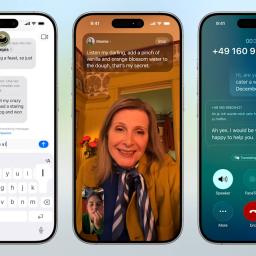 |
by Anna Washenko on (#6XVX7)
Apple had a lot to say about iOS 26 at WWDC 2025. Translation will be a hallmark of the new Apple Intelligence features coming to the next iteration of the iPhone operating system. During this year's annual showcase at Cupertino, the team revealed that it is adding live translation of calls and texts, with integration into the Messages, Phone and FaceTime apps.Live translations will be powered by AI models on the device. When translations are happening during a call, they will be spoken aloud by an AI voice and will also appear as written out captions. In texts, Messages can automatically translate while a user types. Leslie Ikemoto, Apple's director of input experience, noted that live translations will also be available even when communicating with a non-Apple smartphone. However, she didn't specify which languages will be supported in live translation, so we'll be keeping an eye out for that detail.iPadOS 26 will also be bringing live translation to the same three core apps: Phone, FaceTime and Messages. Apple noted that the automatic translation will be available in group chats on iPads as well as one-to-one messages. And if you have an iPhone that supports using Apple Intelligence features, live translation can also be used with the Messages app in watchOS 26 on the Apple Watch Series 9, Apple Watch Series 10 and Apple Watch Ultra 2.Apple added some translation features to Siri all the way back in iOS 11, then launched its own dedicated Translate app as part of iOS 14. Those capabilities will now be more thoroughly baked into the iPhone operating system as part of the Apple Intelligence suite.There has been some chatter in the Apple camp about the possibility for live translation to be added to the AirPods, but nobody discussed that on stage today. Google has offered translation on its Pixel Buds for a few years now, so that's an area where Apple is trailing on features. It's possible we'll hear more about that subject in the fall when Apple's keynote centers more on hardware developments.This article originally appeared on Engadget at https://www.engadget.com/big-tech/apple-introduces-ai-powered-live-translation-tools-at-wwdc-2025-173605234.html?src=rss
|
 |
by Mat Smith on (#6XVT4)
Supermassive's well-regarded interactive survival horror series, the Dark Pictures Anthology, is ready for its second season. Directive 8020 will be its first entry and was available to play in demo form at SGF 2025, even if it was heavily weighted with cutscenes and context-setting preamble.The demo kicked off with a meeting between Young and Stafford, marking the anniversary of Young's father's death, who was also a long-time friend of Stafford's - the commander of the space mission that Young is also bound for.The plot then leaps four years forward, placing us aboard the spaceship Cassiopeia. Oh and it's somehow overrun by some fungal, sentient alien goop. Worse still, but also a horror staple, the goop is coalescing into almost-perfect copies of the human crew. Trust no-one!When the hydroponics bay is overrun by an alien substance, two crewmates Cernan and Stafford, have to fight their ET doppelgangers. Finally, I got to play (but only for a few minutes), moving stealthily around the lower deck of the hydroponics bay while my alien copy (now fungal and angry) tried to hunt me down. Fortunately, you're equipped with a scanner to mark where the aliens were last seen, and after triggering a nearby hydroponic pod to distract, I made my way up the ladder.This was one of three ways to play this section, handily introducing a new mechanic for The Dark Pictures' second run: Turning Points. Using this feature, you can rewind to these decision trees, allowing you to replay sections and explore different options or alter the outcome. This is an interesting change for the series. In previous games, while you could rewind to replay entire sections in macro, there was no way to change a single micro decision.I discussed this with my colleague Jessica Conditt, and we're both the kind of players to continue with our terrible decisions in games like Directive 8020, the Dark Pictures Anthology, Until Dawn and the rest. Fortunately, then, Directive 8020 will include a hard-boiled Survivor Mode - with no rewinds.The demo shifted back to a more narrative focus and cutscenes, briefly interrupted by the possibility that one crew member (specifically, the CEO funding the whole operation) might be an alien. Did I pull the trigger? Nope. I'll have to wait til the October launch to know if that was the right decision to make.Directive 8020 launches on 2nd October, 2025 on PlayStation 5, Xbox Series X|S, and Steam.This article originally appeared on Engadget at https://www.engadget.com/gaming/directive-8020-turning-points-explained-hands-on-170049793.html?src=rss
|
 |
by Lawrence Bonk on (#6XVT5)
GOG has made it much easier to install and run game mods, which has long been a sticking point for fans looking to get into fan-made creations. Certain mods will now offer a simple "install" button, so it'll be ready to play with just a single click. These mods come packed in with the game, so you don't even have to peck around the internet for hours on end.The company promises that each mod has been "pre-packed, pre-tested" and will be "ready to go." There is, however, one major caveat. This feature is only available for a curated selection of mods, so other mods will have to be installed the old-fashioned way.Luckily, this curated list contains some real gems. These include Heroes of Might and Magic III: Horn of the Abyss and DOOM 3: Phobos. Perhaps the most notable of the bunch is last year's Fallout: London. This impressive fan-made update of Fallout 4 brings the action to London, giving players access to a brand-new, massive map.The Elder Scrolls: Skyblivion is missing for now, but GOG says this fan-made remake of The Elder Scrolls IV: Oblivion that uses the Skyrim engine is coming soon. However, an official remaster of Oblivion came out earlier this year.This article originally appeared on Engadget at https://www.engadget.com/gaming/pc/gog-adds-a-one-click-option-to-install-select-mods-165408239.html?src=rss
|
 |
by Sarah Fielding on (#6XVM7)
YouTube is following in the potentially dangerous steps of Meta and X (formerly Twitter) by relaxing its content moderation policies. New internal training materials viewed by The New York Times instruct moderators to leave videos live if up to half its content violates YouTube's policies, an increase from a quarter of it. The platform introduced the new policy in mid-December, a month after President Trump was re-elected.The new guidelines reflect what YouTube deems as "public interest." These areas include discussing or debating elections, movements, race, gender, immigration and more. "Recognizing that the definition of 'public interest' is always evolving, we update our guidance for these exceptions to reflect the new types of discussion we see on the platform today," Nicole Bell, a YouTube spokesperson, told The New York Times. "Our goal remains the same: to protect free expression on YouTube while mitigating egregious harm."When Engadget reached out to YouTube, Bell shared more context on the decision. "We regularly update our Community Guidelines to adapt to the content we see on YouTube. As examples, earlier this year, we retired our remaining COVID-19 policies and added new protections related to gambling content," Bell said. "The New York Times article is about a separate aspect of our approach: our long-standing practice of applying exceptions to our policies for content that serves the public interest or has EDSA (educational, documentary, scientific, artistic) context. These exceptions apply to a small fraction of the videos on YouTube, but are vital for ensuring important content remains available. This practice allows us to prevent, for example, an hours-long news podcast from being removed for showing one short clip of violence. We regularly update our guidance for these exceptions to reflect the new types of discussion and content (for example emergence of long, podcast content) that we see on the platform, and the feedback of our global creator community. Our goal remains the same: to protect free expression on YouTube."The platform has reportedly removed 22 percent more videos due to hateful and abusive content than last year. It's not clear how many videos were reported or would have been removed under the previous guidelines.YouTube reportedly told moderators to now value keeping content up if it's a debate between freedom of expression and risk. For example, they were shown a video called "RFK Jr. Delivers SLEDGEHAMMER Blows to Gene-Altering JABS" which falsely stated that Covid vaccines can change people's genes. However, YouTube told the moderators that public interest "outweighs the harm risk" and the video should stay up. It has since been removed, though the reason why is unclear.Other videos allowed to remain online included one with a slur aimed at a transgender person and one in which a commentator discussed a graphic demise for former South Korean president Yoon Suk Yeol.Update, June 9 2025, 12:27PM ET: This article has been updated to include YouTube's statement to Engadget.This article originally appeared on Engadget at https://www.engadget.com/entertainment/youtube/youtube-now-allows-more-harmful-misinformation-on-its-platform-133002902.html?src=rss
|
 |
by Devindra Hardawar on (#601QX)
It's hard to be a new parent, we know. And it's even harder to take care of yourself while trying to keep a new human alive. Thankfully, there's a lot of tech out there that helps ease the burden for moms and dads - from tablets and earbuds to a rattle that could help avoid an infant meltdown. Tech won't help with the mountains of dirty diapers - at least, not until robotic diaper nannies are a thing - but it can at least help new parents stay sane. This article originally appeared on Engadget at https://www.engadget.com/best-gifts-for-new-dads-110049541.html?src=rss
|
 |
by Mat Smith on (#6XVT6)
Sometimes, you tire of guns, zombies, and sequels; sometimes, you want to lead a bunch of tiny creatures and rhythmically march them into combat, letting the waves of confusion wash over you. That's what Ratatan is here to do.It's the spiritual successor to Japan Studio and Pyramid's beloved Patapon rhythmic action series. However, you don't control Patapons, anymore, but Ratatans - which are completely different. These animal(ish) characters bark button-timing orders to their little squad of Cobun characters, who can launch attacks, assemble around the character you control, evade attacks and more. Inputting command sequences promptly also charges up the "Fever" bar, improving the effectiveness of those actions as well.I haven't played the Patapon series, which stretched to three (!) games on the PSP, in years, and while the mechanics are similar, Ratatan is more elaborate, evolved and customizable. At its core, though, it's the same mechanic that demands you maintain the rhythmic input of commands and avoid attacks. It sounds simple enough, but corralling your Cobuns to follow you into battle and balance special attacks with avoiding damage felt like the gaming equivalent of patting your head and rubbing your stomach. Also, it's 2025, so it's a roguelike flavor of rhythmic action. Of course.You can select between several different animals-with-weapons-and-one-eye, and each comes with a different load-out of Cobun warriors. Some are melee fighters, while others are ranged attackers. You can also buy (or craft) more powerful weapons for each Cobun, adding to the sense of progression. I think that's needed, as Ratatan is a roguelike take on the Patapons that came before it. You'll dive into a portal and battle multiple waves of enemies, often picking up buffs or treasure at the end of each wave.Each run is then typically capped off with a boss fight, either against a smarter, smaller enemy (and its underlings) or a more monstrous threat. During my demo, I was mostly getting beaten by a giant hermit crab, despite having picked up a very useful freezing attack buff during that run. I had to learn that lesson: You can pick up all the buffs you want, but you'll still need to nail the rhythm of attack and defense, while simultaneously keeping an eye on enemy attacks and the placement of both your character and your adorable Cobun fighters. (Ratatan's character designs are inspired by Nelnal, best known for their work on Pokemon and Deltarune.)Further fight dynamics include a jump move and guard move that combines the Ratatan and Cobun movements to avoid game-ending damage. Fortunately, the early parts of the game didn't demand mastery of these.There's an early Ratatan demo still available to play on Steam, but the build available at SGF 2025 seems much closer to a finished release. I was able to explore the game's hub world, filled with shops for upgrades, crafting and organizing your Ratatans' band of Cobun warriors. These parts felt a little confusing when served alongside the starting levels of the game, but should add longevity and interest when folded into the whole game.Ratatan will launch later this year on PC, Nintendo Switch, PS4, PS5 and Xbox Series X/S.This article originally appeared on Engadget at https://www.engadget.com/gaming/ratatan-demands-your-attention-rhythmically-160048067.html?src=rss
|
 |
by Will Shanklin on (#6XVT7)
You'll have to wait a little longer for The Legend of Zelda movie. Nintendo said on Monday that the film's new release date is May 7, 2027. That's six weeks later than the slot it announced earlier this year. The company attributed the rescheduling to production delays."This is Miyamoto," Nintendo's announcement post began. "For production reasons, we are changing the release date of the live-action film of The Legend of Zelda to May 7, 2027. It will be some weeks later than the release timing we originally announced, and we will take the extra time to make the film as good as it can be. Thank you for your patience."Director Wes Ball in 2024RedditWe don't know much about the movie yet. Its director (Wes Ball) and screenwriter (T.S. Nowlin) are both known for The Maze Runner trilogy. Ball also worked on Kingdom of the Planet of the Apes, the fourth installment in the modern reboots.In 2023, Ball suggested that the film could have an anime influence. He described it as "this awesome fantasy-adventure movie that isn't like Lord of the Rings, it's its own thing. I've always said, I would love to see a live-action Miyazaki. That wonder and whimsy that he brings to things, I would love to see something like that."This article originally appeared on Engadget at https://www.engadget.com/entertainment/nintendo-delays-the-legend-of-zelda-movie-155753324.html?src=rss
|
 |
by Ian Carlos Campbell on (#6XKER)
Apple's WWDC keynote is arguably the company's biggest event of the year outside of the annual iPhone launch in September. The livestream, which starts today at 1PM ET / 10AM PT, kicks off Apple's Worldwide Developers Conference, the company's yearly showcase for the new features coming to all of its hardware devices over the next year. Apple execs will be showing off big new features coming over the next 15 months to iOS, macOS, iPadOS and all the company's other platforms. Of course, the elephant in the room is Apple Intelligence. Apple's take on AI was launched with much fanfare at last year's WWDC, but after a tepid consumer response and recently announced delays to some of its key features, we're anxious to hear where the initiative is headed next.To find out what Apple has planned for yourself, you can watch the WWDC 2025 keynote on its website, its YouTube channel and right here (embedded above) once the livestream is up. Apple will also host developer sessions online for more in-depth, technical overviews of the new software features it announces.And for even deeper analysis of everything that gets announced today, follow Engadget's WWDC 2025 liveblog from our on-the-ground reporters, and stay with us throughout the day (and week) as share our perspective on the big changes coming to Apple's operating systems before they roll out later this year.WWDC 2025: What to expect (and final rumors)One way Apple could reportedly smooth over any ill feelings about AI is by completely redesigning its operating systems to make them more cohesive, easier to use and reminiscent of visionOS. The company is said to be planning the debut of its "Liquid Glass" interface redesign, which will come with "see-through visuals," for WWDC. The iPad could also receive some attention, with reports suggesting Apple will introduce yet another approach to multitasking and window management in an effort to make the tablet Mac-like. Add in new battery management feature and a "virtual health coach," and the company may have a raft of updates not immediately Apple Intelligence-related to get excited about.In a recently released poster for WWDC, Apple included a tagline with the two words "Sleek peek." While previous versions of these have been endlessly speculated over to see if any clues could be found, the ones for the last few years have proven to be vaguely related. The invitation for the iPhone event last year said "It's Glowtime," which on hindsight could be in reference to the glowing edges of the new Siri interface, but that was first unveiled at WWDC 2024. Ultimately, "It's Glowtime" had little to do with the iPhone 16 series, which were most notable for their new Camera Control buttons.In perhaps less significant news, Apple might also be renaming its operating systems, unifying them under a number designating the upcoming year - so we could see iOS 26, not iOS 19. It'll be a nice bit of unity given that we currently have everything from visionOS 2 to iPadOS 18 and everything in between.Update, June 3 2025, 11:30AM ET: This story has been updated to include details on the event's tagline, which was revealed yesterday by Apple.Update, June 8 2025, 8PM ET: This story has been updated to include rumored details on the software redesign Apple is expected to debut at WWDC.Update, June 9 2025, 11:03AM ET: This story has been updated to reflect that the WWDC keynote is imminent (today).This article originally appeared on Engadget at https://www.engadget.com/big-tech/how-to-watch-todays-apple-wwdc-2025-keynote-184227551.html?src=rss
|
 |
by Andre Revilla on (#6XVPS)
Warner Bros. Discovery (WBD) has announced that it will be splitting up into two separate media companies. The new structure will see one entity retain Warner Bros. film, television and game studios, along with New Line Cinema, DC Studios, HBO and HBO Max, while the other will hold the company's full portfolio of live cable channels, which includes many household names like CNN, HGTV, Cartoon Network, Discovery, TCL and others.In a shareholder deck, WBD refers to these two entities as WBD Global Networks" and WBD Streaming & Studios," and highlights the strengths of each portfolio. The company points out that the newly minted entities would each produce healthy free cash flow and intends for each to be listed as publicly traded companies. This comes just three years after the original merger between WarnerMedia and Discovery.David Zaslav, the current CEO and president of WBD, will serve as president and CEO of Streaming & Studios. Gunnar Wiedenfels, currently CFO of WBD, will serve as president and CEO of Global Networks. Both remain in their current roles until the separation is complete.The cultural significance of this great company and the impactful stories it has brought to life for more than a century have touched countless people all over the world. It's a treasured legacy we will proudly continue in this next chapter of our celebrated history," said Zaslav in a statement. By operating as two distinct and optimized companies in the future, we are empowering these iconic brands with the sharper focus and strategic flexibility they need to compete most effectively in today's evolving media landscape."In an investor presentation, WBD announced it will be taking a $17.5 billion loan from J.P. Morgan to assist in a cash tender and consent solicitation for all of its approximately$35.5 billion in outstanding bonds. This means it will be buying back some of the bonds while also asking bondholders to loosen their terms, and will offer cash incentives to those who agree to sell or restructure. According to The Hollywood Reporter, the majority of the total debt will be held by Global Networks, while a not-insignificant portion" will remain with Streaming & Studios. The exact breakdown of the debt at each entity remains to be seen, pending the outcome of the companies' debt restructuring.This article originally appeared on Engadget at https://www.engadget.com/entertainment/warner-bros-discovery-will-split-into-two-media-giants-144553585.html?src=rss
|
 |
by Kris Holt on (#6XV75)
We've been hearing rumors for what feels like an eternity about Microsoft working with ASUS' ROG division on a gaming handheld device, and we got confirmation during the Xbox Games Showcase at Summer Game Fest. There are two variants of the handheld: the ROG Xbox Ally and ROG Xbox Ally X.Microsoft hasn't reveal pricing for the devices as yet. It stands to reason that they'll be in the same ballpark as the currently ROG Ally systems, which cost up to $800 for the ROG Ally X. Details on how much the systems cost, pre-orders, accessories and more are coming soon, the company said.The exact release date is not yet known but the Xbox Ally and Xbox Ally X are coming this holiday season. The handhelds will initially be available in Australia, Belgium, Canada, Denmark, Finland, France, Germany, Ireland, Italy, Japan, Korea, Mexico, the Netherlands, New Zealand, Norway, Poland, Portugal, Saudi Arabia, Singapore, Spain, Sweden, Switzerland, Thailand, Turkey, the United Arab Emirates, the United Kingdom and, shockingly enough, the US.Xbox head Sarah Bond says that every game included in the showcase will be playable on the Xbox Ally, but didn't make clear whether all of those would run natively on the devices. The reveal trailer also included a notable focus on Hollow Knight: Silksong, for what it's worth (and it was reaffirmed that the game is still set to come out this year).MicrosoftCritically, Microsoft and ROG aren't locking the devices to only playing Xbox games (though you can play those natively, via the cloud or by accessing an Xbox console remotely). You'll be able to play games from Battle.net and "other leading PC storefronts" too - those include Steam, GOG and Ubisoft Connect. Obviously, there's Game Pass integration here, as well as support for the Xbox Play Anywhere initiative, which enables you to play games with synced progress across a swathe of devices after buying them once.Microsoft says it has teamed up with Roblox to make that game natively playable on a gaming handheld for the first time. It's working with third-party developers on a Steam Deck-style program to make it clear which games have been optimized for handhelds, including the Xbox Ally systems. Expect more details on that down the line. In addition, it seems that those who snap up an Xbox Ally or Ally X and haven't yet tried out Game Pass will get a free trial.Microsoft has designed a full-screen Xbox user interface for the handhelds. There's a dedicated physical Xbox button that can bring up a Game Bar overlay, which seemingly makes it easy to switch between apps and games, tweak settings, start chatting with friends and more. Accessibility features from Xbox consoles and PCs will be available too, along with the Gaming Copilot.Naturally, the systems run on Windows 11. Microsoft says it has optimized the operating system for the devices, with easy access to device and input controls via ASUS' Armoury Crate. The company added that "the lock screen and task switcher have also been adjusted for easy navigation with a controller." You'll be able to mod games on either system as well.The Xbox Ally is powered by the AMD Ryzen Z2 A Processor, and has 16GB of RAM and 512GB of SSD storage. The Xbox Ally X is the more powerful model. It has a AMD Ryzen AI Z2 Extreme processor, 24GB of RAM and 1TB of storage. They each have a microSD card reader, so you won't need to worry about shelling out for proprietary storage to have extra space for your games.The two models seem to have the same screen, a seven-inch 1080p, 16:9 display with a 120Hz refresh rate and 500 nits of brightness. The anti-reflection displays will feature Corning Gorilla Glass Victus and support FreeSync Premium.Both systems boast "HD haptics." The Xbox Ally has hall effect analog triggers, while the Xbox Ally X has "impulse triggers for enhanced control." It sounds a little like Microsoft and ASUS are taking a page out of the PlayStation DualSense playbook there. Anyway, both of the Xbox Ally systems have two assignable back buttons and 6-axis IMU - a fancy way of saying that they'll probably have gyro controls. Blessedly, both of the handhelds have a 3.5mm combo audio jack, along with Wi-Fi 6E and Bluetooth 5.4.MicrosoftThe Xbox Ally and Xbox Ally X are exactly the same size at 290.8 x 121.5 x 50.7mm. They each weigh more than the Nintendo Switch 2 (534g or 1.18lbs with Joy-Con 2 attached) and PlayStation Portal (520g or 1.15 lbs). The Xbox Ally is marginally heavier than the Steam Deck (669g or 1.47lbs) at 670g. The Xbox Ally X is even beefier at 715g (1.58lbs). For the record, the ROG Ally is 608g (1.34 lbs) and the Ally X is 678 grams (1.5 lbs).So, they're both chonksters, but at least those grips look more ergonomic than those on the Nintendo Switch 2 (which is already cramping my hands) or even the Steam Deck. Microsoft says the design principles of Xbox Wireless Controller was adopted for the Xbox Ally handgrips.Both systems will be capable of outputting video to a TV or monitor, as they have two USB-C ports with support for DisplayPort 2.1 and Power Delivery 3.0. One of the Xbox Ally X's USB-C ports is compatible with ThunderBolt 4. It also has a larger battery, with a capacity of 80Wh compared with the Xbox Ally's 60Wh battery. Both models come with a charging stand.Microsoft has spent the last few years expanding the Xbox ecosystem beyond consoles and PC through efforts like Xbox Cloud Gaming. Its first official move into gaming handhelds is a big step as it tries to play catch up to PlayStation and Nintendo.This article originally appeared on Engadget at https://www.engadget.com/gaming/xbox/rog-xbox-ally-handheld-gaming-devices-are-real-and-will-be-released-during-the-2025-holiday-season-142135533.html?src=rss
|
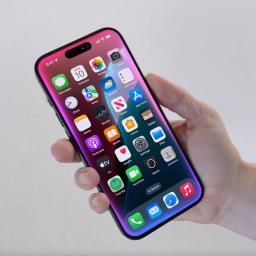 |
by Igor Bonifacic on (#6XVM8)
At WWDC 2024, Apple failed its customers. When the company announced the new, more personal Siri last year, it showed a product that was nowhere near ready. You can point to many different places where Apple Intelligence failed to meet expectations, but with WWDC 2025 fast approaching, the company owes its users an explanation of how it intends to win back their trust.If you didn't watch last year's conference, here's a recap. At the heart of Apple's promise of a better digital assistant was App Intents, a feature that would give Siri the ability to understand all the personal information stored on your iPhone. During the presentation's most memorable moment, Apple demoed Siri responding to a request from Kelsey Peterson, the company's director of machine learning and AI, for an update on her mom's flight. The assistant not only understood the prompt, but provided real-time flight tracking information in the process.In short, the demo promised - after years of neglect - that Siri would finally be useful.It should have been obvious in hindsight that Apple was overselling its progress on Siri, and AI more broadly. At WWDC 2024, the company did not let press and other attendees try the new version of the assistant. There wasn't even an opportunity to watch the company's employees use Siri. In fact, according to reporting The Information later published, it's probably more accurate to describe what Apple showed last June not as a demo but as an elaborate concept video.If Apple had only faked the WWDC demo, that would have been bad enough, but the company did something worse. As you may recall, the tech giant began rolling out Apple Intelligence features piecemeal in September. Rather than a public statement explaining the lack of progress, the company only admitted it was delaying the upgrade to sometime "in the coming year" after Daring Fireball's John Gruber sought answers. That same day, as if the company had only just realized its error, Apple pulled a TV commercial that showed The Last of Us star Bella Ramsey using the new Siri in the way it had demoed at WWDC 2024.It's going to take a lot for Apple to fix Apple Intelligence, but the best place the company can start is by being honest with its customers. Corporations, especially ones as big as Apple, rarely show humility, but in this case, an acknowledgement from the company that it promised the moon and missed the mark would go a long way towards righting some of the sins of WWDC 2024.This applies to other aspects of Apple Intelligence just as much as it does with Siri. Look at the damage notification summaries did to Apple's reputation. Apple Intelligence was so bad at aggregating the news, the company ended up pausing the notifications in the iOS 18.3 beta. When it released 18.3 to the public a couple of weeks later, it began labeling the alerts to give users a warning they may include errors.As for other Apple Intelligence features like Image Playground and Genmoji, they're forgettable because they offer little utility and see Apple following trends rather than offering something that truly enhances the usefulness of its devices. There too the company can tell its users it missed the mark and it plans to do better.There's no reason Apple can't make Apple Intelligence great, but any effort to do so has to start with the company being honest: about what its roadmap of features can actually do, and to own up to when its promises can't be fulfilled.This article originally appeared on Engadget at https://www.engadget.com/ai/to-fix-apple-intelligence-apple-needs-to-be-honest-about-its-capabilities-130046256.html?src=rss
|
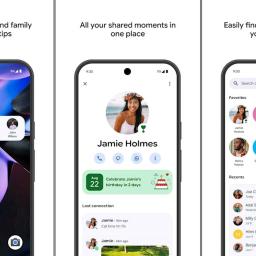 |
by Sarah Fielding on (#6XVM9)
Google is officially letting you prioritize certain people in your life. The company has launched Pixel VIPs, an update that allows Google Pixel owners to "stay connected to the people who matter most and never miss a moment from them." It expands on Google's existing favorite contacts option, 9To5Google reports.Pixel VIPs includes features such as placing your "VIPs" at the top of your contact list and letting them bypass your device's do not disturb. If you click on a specific person then you can see their real-time location, weather and time. It also shows the last time you two connected. Plus, Google will suggest things for the two of you to do together based on your preferences.You also have the option of adding notes to their contact page. These tidbits might include their new dog's name, when they're traveling or a reminder of your plans together.The possibility that Google was working on this update first arose last summer under the name "besties," rather than "VIP." Reports from 9To5Google showed it replacing the favorite contacts option but didn't reveal much else.This article originally appeared on Engadget at https://www.engadget.com/mobile/google-pixels-new-vip-contacts-lets-your-favorite-people-bypass-do-not-disturb-123053232.html?src=rss
|
 |
by Jackson Chen on (#6XVJD)
JBL is reintroducing its immersive soundbar lineup with even more power, but thankfully, the convenient detachable side speakers aren't going anywhere. JBL refreshed the entire Bar lineup, with the Bar 1000 MK2 leading the charge. The soundbar still features a 10-inch wireless subwoofer along with removable speakers on each end that let you continue playing your music or movies even if you wander away from the TV.For the 2025 refresh, JBL kept the Bar 1000 MK2 on a 7.1.4 channel setup, but pumped up the max power output to 960W for an even louder and more immersive listening experience. The detachable speakers still have a max battery life of up to 10 hours, where you can reattach them to the soundbar to recharge. Like its predecessor, the Bar 1000 MK2 features true Dolby Atmos, thanks to four upfiring drivers, along with DTS:X 3D surround sound and MultiBeam 3.0. You won't have to constantly adjust the volume when bouncing between dialogue scenes and loud action since the updated soundbar has PureVoice 2.0 that automatically optimizes the dialogue volume based on the scene's ambient sound.The Bar 1000 MK2 can still use Bluetooth or Wi-Fi to connect to a device, but is also compatible with AirPlay 2 and Spotify Connect. Besides the Bar 1000 MK2, JBL will debut the refreshed Bar 700 MK2 that comes with detachable speakers too, but can only virtualize Dolby Atmos. The updated Bar 500 MK2 and Bar 300 MK2 also don't offer true Dolby Atmos, nor JBL's Night Listening mode that automatically reduces loud noises. If you're in need of a soundbar with a subwoofer, it's worth noting that the new Bar 300 MK2 still doesn't have one.The Bar 1000 MK2 is due to hit the shelves first at $1,199 later this month. The release of the $899 Bar 700 MK2, the $649 Bar 500 MK2 and the $449 Bar 300 MK2 will follow shortly after. The most expensive of JBL's Bar lineup, an 11.1.4-channel follow-up to the Bar 1300X, will release in the fall and start at $1,699. While it's much more expensive, it will come with detachable speakers that have standalone Bluetooth capabilities.This article originally appeared on Engadget at https://www.engadget.com/audio/speakers/jbl-refreshes-its-2025-soundbars-with-a-serious-power-up-120014177.html?src=rss
|
 |
by Jessica Conditt,Mat Smith,Aaron Souppouris on (#6XTTN)
It's early June, which means it's time for a ton of video game events! Rising from the ashes of E3, Geoff Keighley's Summer Game Fest is now the premium gaming event of the year, just inching ahead of... Geoff Keighley's Game Awards in December. Unlike the show it replaced, Summer Game Fest is an egalitarian affair, spotlighting games from AAA developers and small indies across a diverse set of livestreams. SGF 2025 includes 15 individual events running from June 3-9 - you can find the full Summer Game Fest 2025 schedule here - and we're smack dab in the middle of that programming right now.We're covering SGF 2025 with a small team on the ground in LA and a far larger group of writers tuning in remotely to the various livestreams. Expect game previews, interviews and reactions to arrive over the coming days (the show's in-person component runs from Saturday-Monday), and a boatload of new trailers and release date announcements in between.Through it all, we're collating the biggest announcements right here, with links out to more in-depth coverage where we have it, in chronological order.Tuesday, June 3State of Unreal: The Witcher IV and Fortnite AIEpic hitched its wagon to SGF this year, aligning its annual developer Unreal Fest conference, which last took place in the fall of 2024, with the consumer event. The conference was held in Orlando, Florida, from June 2-5, with well over a hundred developer sessions focused on Unreal Engine. The highlight was State of Unreal, which was the first event on the official Summer Game Fest schedule. Amid a bunch of very cool tech demos and announcements, we got some meaningful updates on Epic's own Fortnite and CD PROJEKT RED's upcoming The Witcher IV.The Witcher IV was first unveiled at The Game Awards last year, and we've heard very little about it since. At State of Unreal, we got a tech demo for Unreal Engine 5.6, played in real time on a base PS5. The roughly 10-minute slot featured a mix of gameplay and cinematics, and showed off a detailed, bustling world. Perhaps the technical highlight was Nanite Foliage, an extension of UE5's Nanite system for geometry that renders foliage without the level of detail pop-in that is perhaps the most widespread graphical aberration still plaguing games today. On the game side, we saw a town filled with hundreds of NPCs going about their business. The town itself wasn't quite on the scale of The Witcher III's Novigrad City, but nonetheless felt alive in a way beyond anything the last game achieved.It's fair to say that Fortnite's moment in the spotlight was... less impressive. Hot on the heels of smooshing a profane Darth Vader AI into the game, Epic announced that creators will be able to roll their own AI NPCs into the game later this year.Wednesday, June 4PlayStation State of Play: Marvel Tkon, Silent Hill f and the return of LuminesAnother company getting a headstart on proceedings was Sony, who threw its third State of Play of the year onto the Summer Game Fest schedule a couple days ahead of the opening night event. It was a packed stream by Sony's standards, with over 20 games and even a surprise hardware announcement.The most time was given to Marvel Tkon: Fighting Souls, a new PlayStation Studios tag fighter that fuses Marvel Superheroes with anime visuals. It's also 4 versus 4, which is wild. It's being developed by Arc System Works, the team perhaps best known for the Guilty Gear series. It's coming to PS5 and PC in 2026. Not-so-coincidentally, Sony also announced Project Defiant, a wireless fight stick that'll support PS5 and PC and arrive in... 2026.Elsewhere, we got a parade of release dates, with concrete dates for Sword of the Sea(August 19) Baby Steps(September 8) and Silent Hill f (September 25). We also got confirmation of that Final Fantasy Tactics remaster (coming September 30), an an all-new... let's call it aspirational "2026" date for Pragmata, which, if you're keeping score, was advertised alongside the launch of the PS5. Great going, Capcom!Rounding out the show was a bunch of smaller announcements. We heard about a new Nioh game, Nioh 3, coming in 2026; Suda51's new weirdness Romeo is a Dead Man; and Lumines Arise, a long-awaited return to the Lumines series from the developer behind Tetris Effect.Thursday, June 5Diddly squatThere were absolutely no Summer Game Fest events scheduled on Thursday. We assume that's out of respect for antipodean trees, as June 5 was Arbor Day in New Zealand. (It's probably because everyone was playing Nintendo Switch 2.)Friday, June 6Summer Game Fest Live: Resident Evil Requiem, Stranger Than Heaven and sequels aboundIt's fair to say that previous Summer Game Fest opening night streams have been... whelming at best. This year's showing was certainly an improvement, not least because there were exponentially fewer mobile game and MMO ads littering the presentation. Yes, folks tracking Gabe Newell's yacht were disappointed that Half-Life 3 didn't show up, and the Silksong crowd remains sad, alone and unloved, but there were nonetheless some huge announcements.Perhaps the biggest of all was the "ninth" (Zero and Code Veronica erasure is real) Resident Evil game. Resident Evil Requiem is said to be a tonal shift compared to the last game, Resident Evil Village. Here's hoping it reinvigorates the series in the same way Resident Evil VII did following the disappointing 6.We also heard more from Sega studio Ryu Ga Gotoku about Project Century, which seems to be a 1943 take on the Yakuza series. It's now called Stranger Than Heaven, and there's a (literally) jazzy new trailer for your consideration.Outside of those big swings, there were sequels to a bunch of mid-sized games, like Atomic Heart, Code Vein and Mortal Shell, and a spiritual sequel of sorts: Scott Pilgrim EX, a beat-em-up that takes the baton from the 2010 Ubisoft brawler Scott Pilgrim vs. the World: The Game.There were countless other announcements at the show, including:
|
 |
by Mat Smith on (#6XVBM)
After a symphony, online multiplayer and a remaster, the well-regarded (and often handheld) puzzler Lumines is getting Enhance's full synesthetic, Tetris-flowing, treatment. Lumines Arise is almost here.If you haven't played the game before, Lumines' premise centers on rotating and dropping four-square blocks made of one or two colors, building up larger squares of a single color. The game's timeline sweeps across the playfield - to the beat of the soundtrack - erasing completed squares in its path, while also giving you the brief opportunity to quickly drop more squares, add multiplier combos and score even more points.Lumines Arise adds a new mechanic to the addictive yet simple puzzle. 'Burst' is a refillable bar that you can trigger with L2/R2, which locks a square on the playing field, allowing you to pile on subsequent blocks. You can initiate Burst once the counter has rolled above 50, although it maxes out at 100. As you might expect for a synesthesia-tickling game like Arise, Burst mode has its own low-key musical accompaniment.Lumines has never looked better. But that's not just due to 2025 hardware power, but also design choices for Lumines' skins - the unhinged wallpaper design and block themes that bubble up as you advance through puzzle stages. They're delightfully mad and, at times, distracting. (As you play, the view of your Lumines blocks will occasionally zoom' closer - this is intentional. Game Director Takashi Ishihara said this was to both add some dynamism to what are typically static blocks, but also to pull the players' attention back to the game at hand. Lumines Arise wants you to focus on the now, not the score, your Burst meter, or your customizable avatar.)My favorite part of the demo was the final stage, which featured two chameleons simply raving along to the dance music. The soundtrack is, naturally, a banger, too. Lumines Arise features new music from Hydelic, also responsible for the award-winning soundtrack of Tetris Effect: Connected. (The band has already launched one track, "Only Human," on Bandcamp - it's coming to other streaming services, too.)On another stage, two skeletal hands, seemingly strung up like puppets, twitch and wriggle as you shift and rotate your blocks. If anything, I think Enhance missed a trick not mapping the finger movements to a DualSense controller. I said that in front of Ishihara because I have zero sense of decorum - apparently, he'd had the same idea. I now consider myself a game designer.I got to briefly see Lumines Arise running on a Steam Deck, too. The time of the handheld console and PC is now, so it's nice to see a typically made-for-consoles game ready for this new gaming PC form factor.Ishihara teased that there's more to reveal ahead of Arise's launch. The game will launch on both PS5 and Steam, and it will also feature VR compatibility on both platforms. While Enhance wasn't yet willing to reveal the details, there will also be some form of multiplayer, but it seems like it'll be in a different form compared to the more adversarial nature of Tetris Effect's multiplayer modes.Additionally, Ishihara wanted to highlight that the avatars, which dance and emote in sync with your in-game actions, now feature legs. That is important, apparently. Enhance is promising more answers in due time. Lumines Arise is set to launch in fall 2025.This article originally appeared on Engadget at https://www.engadget.com/gaming/lumines-arise-hands-on-interview-takashi-ishihara-000038767.html?src=rss
|
 |
by Jessica Conditt on (#6XVAS)
Sword of the Sea is a game about letting go. Its main mechanic involves surfing across vast desert dunes on a thin blade, slicing through glittering sands and scaling ancient towers on a quest to unearth the secrets of civilizations past. It plays best when you forget about the controls entirely, and just surrender to the slick physics and let your little character flow. With enough exploration, you'll naturally discover glowing orbs and shining gold gems, and the sands will transform into deep, crystal clear seas with fish swimming through the air, carving wet paths through the dirt. Your character, dressed in flowing robes and a gold mask, rides the orange hills and the blue waves with the same easy athleticism, reacting instantly to every input on the controller.Charge up a jump and then complete sick tricks with a few quick inputs, or unleash a bubble of sonic energy to smash nearby vases, uncovering bits of currency in the shattered pieces. The protagonist moves in whatever direction you push, stopping immediately when you let go of the analog stick. There are giant chains to grind, a hover ability in some areas, and half pipes generously positioned around the environments. Control prompts pop up when you're first introduced to an ability, but the text fades quickly and you're left alone in the desert. There are no waypoints in Sword of the Sea, but the environment tells a clear story, inviting you to solve puzzles in the mysterious temples dotting the landscape. Find glowing orbs on the rooftops and hidden down secret passageways to unlock the buildings' secrets, opening up new areas.I played about 20 minutes of Sword of the Sea at Summer Game Fest, but I wanted to surf its dunes for a lot longer. It's the kind of game that makes the real world fade away, no matter how chaotic or intrusive your immediate surroundings are. It's built on rhythm and vibes, and it encourages a meditative flow state from its first frames. Learn the controls and then forget them; play with pure intuition and it'll most likely be the right move.The game is about surfing, and it's really about the process of learning to surf and getting comfortable with surfing, and then trying things that are a little bit beyond your abilities, failing, and then figuring it out and actually accomplishing them," Sword of the Sea creator Matt Nava told Engadget on the SGF show floor. And in the process, you kind of realize that surfing is all about harnessing the power of something greater than yourself. You're not paddling - the waves carry you. The zoomed out camera, the little character; in a lot of games, they're right on the character, because the character is the focus. But in this game, it's about how the character is a part of the environment, that is the focus. And I think that's a constant in a lot of the games that we've made."Nava is the creative director and co-founder of Giant Squid, the studio behind Abzu and The Pathless. Even with these two successful games under his belt, Nava is still best known as the art director of Journey, thatgamecompany's pivotal multiplayer experience that hit PlayStation 3 in 2012. Nava has spent the past decade attempting to build explicitly non-Journey-like games with Giant Squid, and while Abzu and The Pathless both have his distinctive visual stamp, they're the opposite of Journey in many ways. Where Journey was set in a dry, desert landscape, Nava's follow-up, Abzu, took place in an underwater world. After that, The Pathless was mostly green, rather than dusty orange.Giant SquidWith Sword of the Sea, Nava let go. He dropped all preconceptions of what he should be making and mentally said fuck it. He finally allowed himself to manifest the game that came naturally to him.In this game, it's very much taking on, accepting and proclaiming that this is me," Nava said. I did Journey. I'm doing orange again. And I'm going back to the desert because I have way more ideas that we couldn't do in that game ... It's like I've been living in my own shadow for a long time in a weird way. It's like, why am I doing that? I should just be who I am and continue to explore the art that is my art."Sword of the Sea is a specific and special game, and even though it's set in an orange desert, it doesn't feel like Journey. The game also includes music by Austin Wintory, the Grammy-nominated composer behind Journey, Abzu and The Pathless. Together, Nava and Wintory form a formidable foundation.A lot of video game scores, they just make a music track for the area," Nava said. If you're in the town, you hear town music, and then it just repeats. But that's not how it works here. The music advances as your story advances, it reflects where you are on your surfing adventure, what you're learning how, how far your character has gone on this character arc. And so that's where the music of a video game like ours should be."As Nava and I chatted, someone sat down to play Sword of the Sea on a nearby screen, and when I glanced up, I saw that they were gliding through an area I didn't find in my runthrough. A giant animal skeleton was half-buried in the sand, bright white vertebrae dotted with gold gems for the player to collect. There are a lot of secrets in Sword of the Sea, Nava assured me. The best way to find them is to just let go and play.Sword of the Sea is due to hit PlayStation 5, Steam and the Epic Games Store on August 19.This article originally appeared on Engadget at https://www.engadget.com/gaming/sword-of-the-sea-is-what-happens-when-matt-nava-strides-back-into-journeys-shadow-233148894.html?src=rss
|
 |
by Cheyenne MacDonald on (#6XVAT)
We've been getting a real kick out of the offbeat cable TV parody that is Blippo+, which arrived with Playdate's Season Two, and now it's looking like non-Playdate owners will be able to experience the strangeness too later this year. Panic, along with Telefantasy Studios, Noble Robot and the artists Yacht, announced at the PC Gaming Show that Blippo+ is coming to PC and Nintendo Switch in fall 2025. And unlike the 1-bit black and white programs we've been tuning into on the Playdate, it'll all be in color.Blippo+ features a roster of live-action programs that may or may not be alien transmissions, plus a forum called Femtofax that brings you even deeper into the unusual goings-on of the Blippians. Panic revealed with the second week of Season Two games that Blippo+ wouldn't just be a one-off release, but would instead get weekly content updates every week for the next eleven weeks. When it lands on the other platforms, Blippo+ will have "a time-hopping mechanic so viewers can travel back and forth through weeks of TV programming without losing the magic of 'non-demand' linear viewing."PanicIt's absurd, it's nostalgic - Blippo+ was made with vintage analog broadcast equipment, according to the creators - and it's totally unpredictable. You really never know what madness it's going to serve up next, and it's great. In color, things are only going to get weirder.This article originally appeared on Engadget at https://www.engadget.com/gaming/playdate-season-2s-blippo-tv-simulator-is-coming-to-nintendo-switch-and-pc-in-color-this-fall-230149046.html?src=rss
|
 |
by Will Shanklin on (#6XVA1)
If you aren't thrilled with what EA has done with The Sims, another alternative is coming soon. The indie passion project Paralives launches in Steam Early Access on December 8.Paralives has all the hallmarks of the life simulation genre. You can build your character, including physical and personality traits. It lets you make friends, move up in your career, fall in love and start a family (or not!). Design is central, too. You can craft your dream home, move walls and resize that stubby love seat into a full-on couch.The game uses "innovative build tools that are easy to use but powerful for advanced builders." When designing your living space, you aren't limited to a grid. You can build on curves and customize any object's colors and textures. There's even an in-game measuring tape for those who want to get ultra-precise.Paralives StudioThe game is the lovechild of Canadian developer Alex Masse, who began the project in 2019. Paralives Studio has now grown to a team of 13 with the sole focus of building "an innovative and fresh life simulation game." It's raised funds exclusively through Patreon. The team's development process is out in the open. You can browse its history and roadmap online, showing the full array of planned features.Crucially, the young studio says Paralives will never have paid DLC - only free expansions. That's one way to take a shot at The Sims without even mentioning its name. And unlike the glitzy AI-fest inZoi, Paralives emphasizes depth and flexibility over presentation. Its simple and charming art style is a foundation for feeling and connection.You can see for yourself in the release date trailer below. Grab Paralives on Steam Early Access (PC and Mac) on December 8.This article originally appeared on Engadget at https://www.engadget.com/gaming/the-sims-like-paralives-hits-early-access-in-december-220014257.html?src=rss
|
 |
by Jackson Chen on (#6XVA2)
Coming off its smash indie hit Spiritfarer, Thunder Lotus Games is taking a more action-heavy approach with its next title. The developer debuted At Fate's End with an announcement trailer during the Xbox Games Showcase at Summer Game Fest 2025, giving us a taste of its captivating visuals and unique combat system.While Spiritfarer offered a more slow-paced experience filled with charming characters looking for a final peace, At Fate's End has a contrasting action-packed style where you follow the story of Shan, a heiress to a clan that's looking to resolve familial disputes by either fighting or talking it out. The gameplay looks equal parts narrative fantasy and intriguing combat style, since you can use tactical dialogue mid-fight or psychological insight about your family to turn the tide of battle. As you progress through the story, you'll face more of your estranged family members, and you advance your skill tree in different ways depending on whether you defeat or reconcile with them.Thunder Lotus Games hasn't set a hard release date yet, but At Fate's End is expected to release sometime in 2026. The upcoming title will be available on Xbox, PlayStation, Steam and Epic Games.This article originally appeared on Engadget at https://www.engadget.com/gaming/at-fates-end-already-looks-like-the-must-play-indie-game-of-2026-204315182.html?src=rss
|
 |
by Cheyenne MacDonald on (#6XVA3)
Two years after it was first announced, we just got an extended trailer for inXile entertainment's Clockwork Revolution at the Xbox Games Showcase, and it looks kind of incredible - and completely over the top. (A man dubbed "The Knob" pisses his pants a minute and 56 seconds in, and someone else later gets cursed out by an automaton doll).Clockwork Revolution is a first-person steampunk RPG set in 1895 in a place called Avalon, which is ruled by the time-manipulating Lady Ironwood. As the customizable player-character Morgan Vanette, you'll have to use her own tactics against her to turn back time and undo the damage she's caused. As with all things time travel, the butterfly effect will be at play. The new trailer, which is over 5 minutes long, shows us this will be one with a lot of action and bloodshed (plus some brain-shed), and a good share of ridiculousness too.We still don't have a release date, though, just the assurance that it's "coming in due time." When it does eventually arrive, Clockwork Revolution will be available on Xbox Series X/S, Xbox PC, Steam and Xbox Cloud. It'll also support Xbox Play Anywhere, and will be available through Xbox Game Pass.This article originally appeared on Engadget at https://www.engadget.com/gaming/xbox/the-new-trailer-for-clockwork-revolution-is-a-wild-extremely-steampunk-ride-203854022.html?src=rss
|
 |
by Jackson Chen on (#6XV8B)
It's not Psychonauts 3, but Keeper already looks to be a visually stunning and highly original gaming experience. Double Fine Productions and the company's art director Lee Petty showed off the official announcement trailer for its latest title during the Xbox Games Showcase at Summer Game Fest 2025. It's not as hype as the news of Persona 4 Revival or The Outer Worlds 2, but this quirky third-person adventure game looks like a fun departure from your typical AAA title.As seen in the trailer, Keeper puts you in control of a magically reassembled lighthouse that's since grown legs and has a strange desire to venture towards the central mountain peak of the island. There's no dialogue for this game, but you won't be alone since an equally adventurous seabird joins you on your mysterious mission. There's little revealed about the storyline, but the trailer shows that the lighthouse's beam of light can interact with the island's wildlife, while your trusty winged companion can take care of anything out of your reach.For diehard fans of the Psychonauts franchise, Keeper's vibrant and striking visuals might be the only thing to scratch that itch for a while. Double Fine Productions previously confirmed in June 2023 that it's not working on Psychonauts 3, following hints at a potential reveal that summer. Double Fine's Keeper will be available on Xbox Series X / S, Xbox PC, Xbox Cloud, Xbox Game Pass and Steam on October 17.This article originally appeared on Engadget at https://www.engadget.com/gaming/xbox/psychonauts-developers-trippy-island-adventure-keeper-comes-out-on-october-17-193405665.html?src=rss
|
 |
by Ian Carlos Campbell on (#6XV8C)
Originally announced as "Project Bloom," Game Freak's upcoming action-adventure game made a formal appearance at the Xbox Games Showcase as Beast of Reincarnation. The studio describes the game as a "one-person, one-dog" RPG and it's supposed to be coming out in 2026.Based on the trailer, the game is set in a post-apocalyptic Japan that's returned to nature due to some kind of beast-born blight. As the main character "Emma the Sealer," you'll travel through the wilderness, engaging in "demanding, technical combat" alongside your dog Koo, all in the hopes of "saving humanity" from the sickness that's plaguing the land.Game Freak is best known for its work on the Pokemon games, but the developer has made an eclectic collection of other projects between mainline entries, including Pocket Card Jockey: Ride On! and more recently, Pandoland. "Project Bloom" was originally supposed to be published by Take-Two's Private Division label, but when the label was sold in 2024, Game Freak's game was taken up by a new publisher called Fictions.Beast of Reincarnation is coming to PS5, Xbox Series X/S and PC in 2026. It'll also be available through Xbox Game Pass at launch.This article originally appeared on Engadget at https://www.engadget.com/gaming/beast-of-reincarnation-is-a-one-person-one-dog-rpg-launching-in-2026-192305237.html?src=rss
|
 |
by Jackson Chen on (#6XV8D)
A renowned Apple engineer who was instrumental in developing modern-day computing has died. Bill Atkinson, who was part of Apple's original Macintosh development team, died of pancreatic cancer at 74, according to a Facebook post made by his family on June 5.His contributions to Apple and the Macintosh personal computer are still widely used today, including fundamental UI elements like the menu bar, double-clicking and the selection lasso. However, Atkinson's work goes much deeper than that, since he's partly responsible for the foundational design language that influenced Apple's early days. His legacy includes creating MacPaint, an application that showed the world what a graphics-based system looks like at a time when text-based systems were the norm, and developing QuickDraw, a graphics toolbox that the Macintosh and Lisa computers use. To make computers more user-friendly, Atkinson also designed HyperCard, an Apple application that introduced hypertext to everyday users and not just programmers. Tim Cook paid tribute to Atkinson, posting on X, that he was a true visionary whose creativity, heart, and groundbreaking work on the Mac will forever inspire us."Beyond Apple, Atkinson was one of three co-founders for General Magic, a software and electronics company that supplied products to Motorola and Sony in the 90s. Later, he worked with Numenta in 2007, which was a startup focused on artificial intelligence. Atkinson was also a seasoned nature photographer, publishing a book called Within the Stone that highlights polished and cut rocks with close-up shots. Atkinson is survived by his wife, two daughters, stepson, stepdaughter, two brothers, four sisters, and dog, Poppy.This article originally appeared on Engadget at https://www.engadget.com/computing/influential-apple-engineer-bill-atkinson-dies-at-74-191024913.html?src=rss
|
 |
by Kris Holt on (#6XV8E)
Xbox fans don't need to wait any longer to play Final Fantasy XVIon their Series X/S. Two years after the action RPG debuted on PS5, it got a surprise release on Xbox's consoles on Sunday. Its sudden arrival was announced during the Xbox Games Showcase as part of Summer Game Fest.The game's now available via the Xbox PC app as well. Granted, Final Fantasy XVI has been on Steam and the Epic Games store since last September, but some folks might have been waiting for its arrival on Xbox. Buying Final Fantasy XVI once on any Xbox platform means you'll be able to play it across console, PC and cloud with synced progression.A complete edition that includes both Final Fantasy XVI expansions is available for Xbox. There's a standard edition that includes the base game as well.The arrival of Final Fantasy XVI on Xbox means that you can now play all the mainline, single-player Final Fantasy games on Microsoft's consoles, save for the Final Fantasy VII remakes. However, Final Fantasy VII Remake Intergrade is coming toXbox this winter - just in time for those new Xbox gaming handhelds.This article originally appeared on Engadget at https://www.engadget.com/gaming/xbox/final-fantasy-16-suddenly-arrives-on-xbox-series-xs-185542283.html?src=rss
|
 |
by Cheyenne MacDonald on (#6XV8F)
Surely I wasn't the only one caught off guard that this trailer featuring Milo Ventimiglia, a cybernetic butterfly and a tentacly upside-down hell world turned out to be the announcement of Call of Duty: Black Ops 7, right? Nevertheless, that just happened at the conclusion of the Xbox Games Showcase, and Call of Duty: Black Ops 7 is officially on the way. Today's teaser comes ahead of an official reveal that's slated for this summer.The game is set in the year 2035, when "the world is on the brink of chaos, ravaged by conflict and psychological warfare following the narrative events of Black Ops 2 and Black Ops 6." According to Activision, it's "the first-ever consecutive release within the series, set more than 40 years after the events of Black Ops 6." It's all kinds of futuristic, and will see David Mason and crew facing "a manipulative enemy who weaponizes fear above all else."Call of Duty: Black Ops 7 will be available on Xbox Series X/S, Xbox One, Xbox PC, Xbox Cloud, Xbox Play Anywhere, Battle.net, Steam, PlayStation 5 and PlayStation 4. Xbox Game Pass subscribers will also get it on launch day.This article originally appeared on Engadget at https://www.engadget.com/gaming/xbox/heres-our-first-look-at-call-of-duty-black-ops-7-184709483.html?src=rss
|